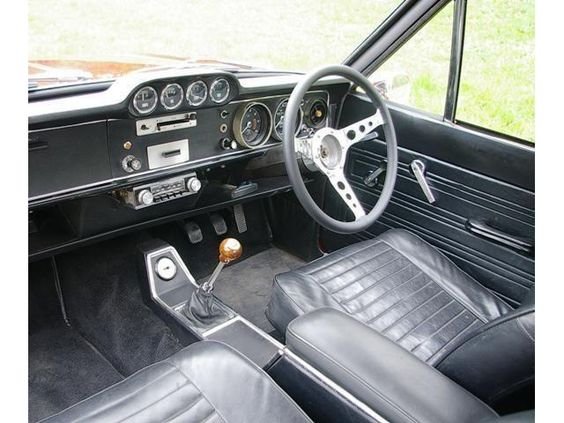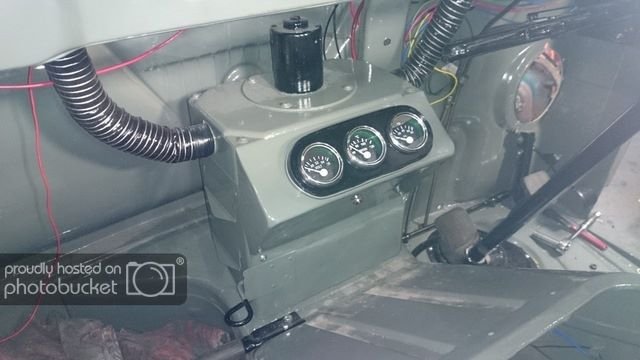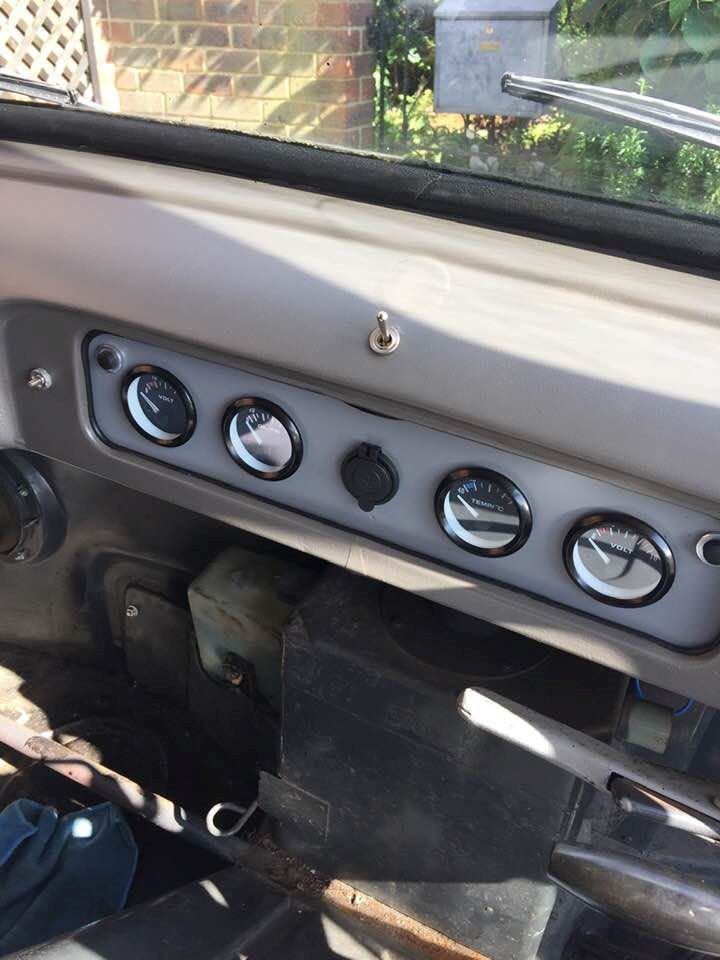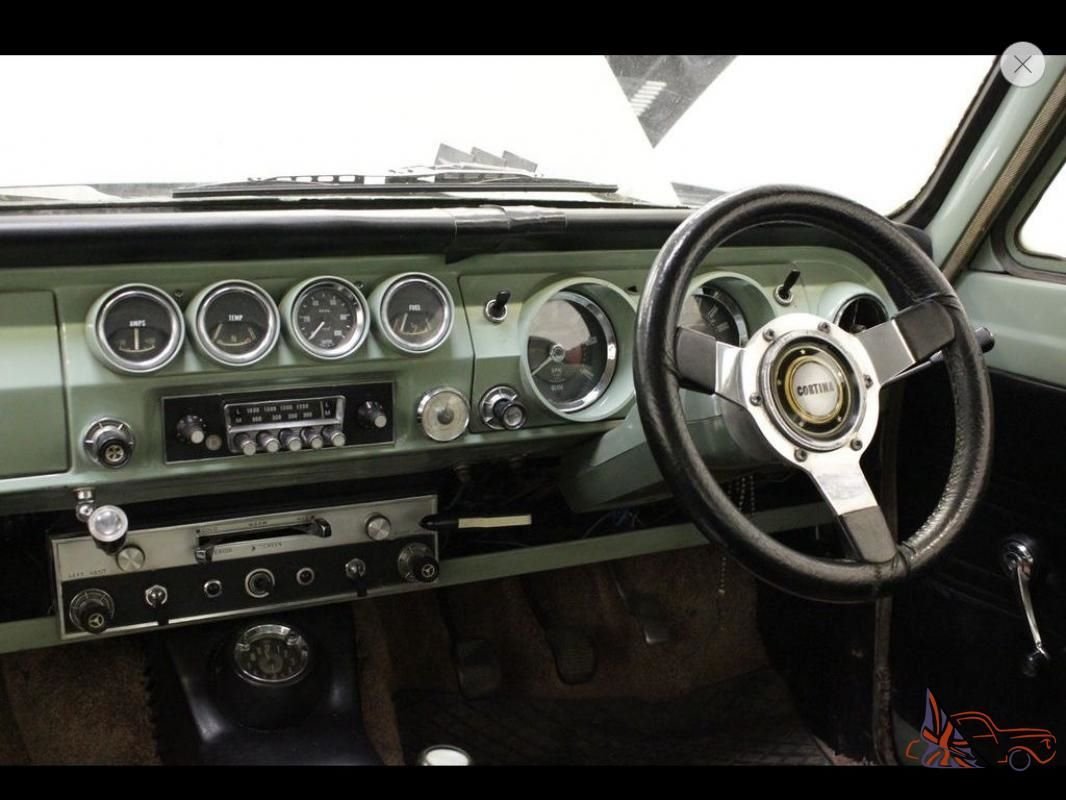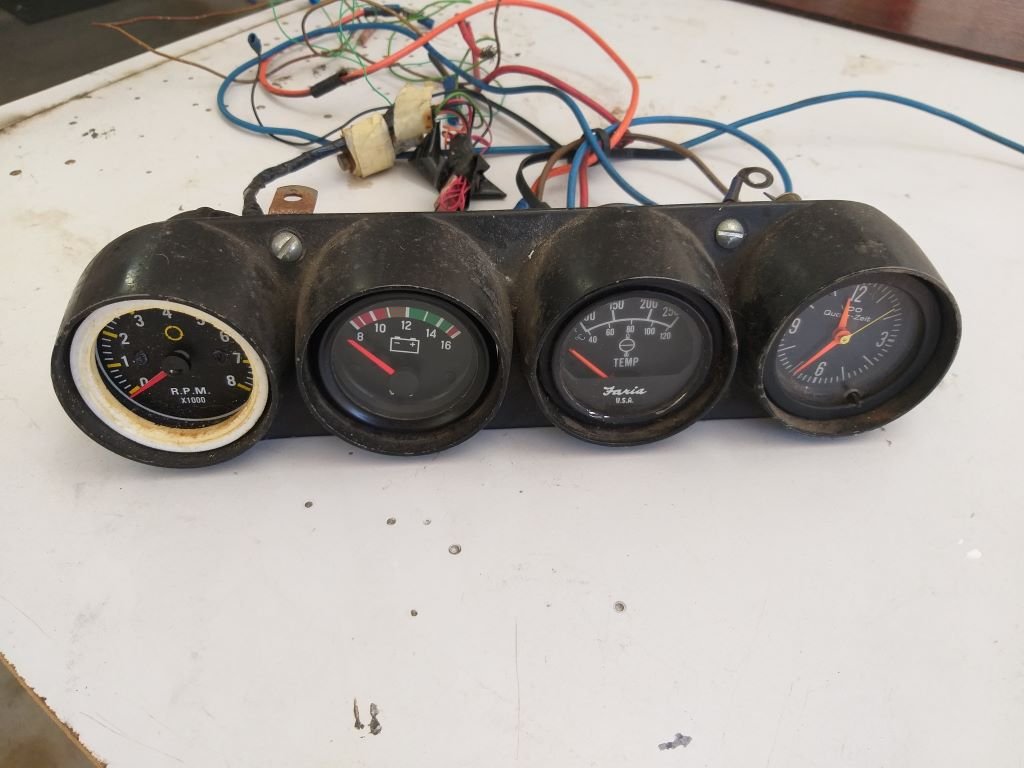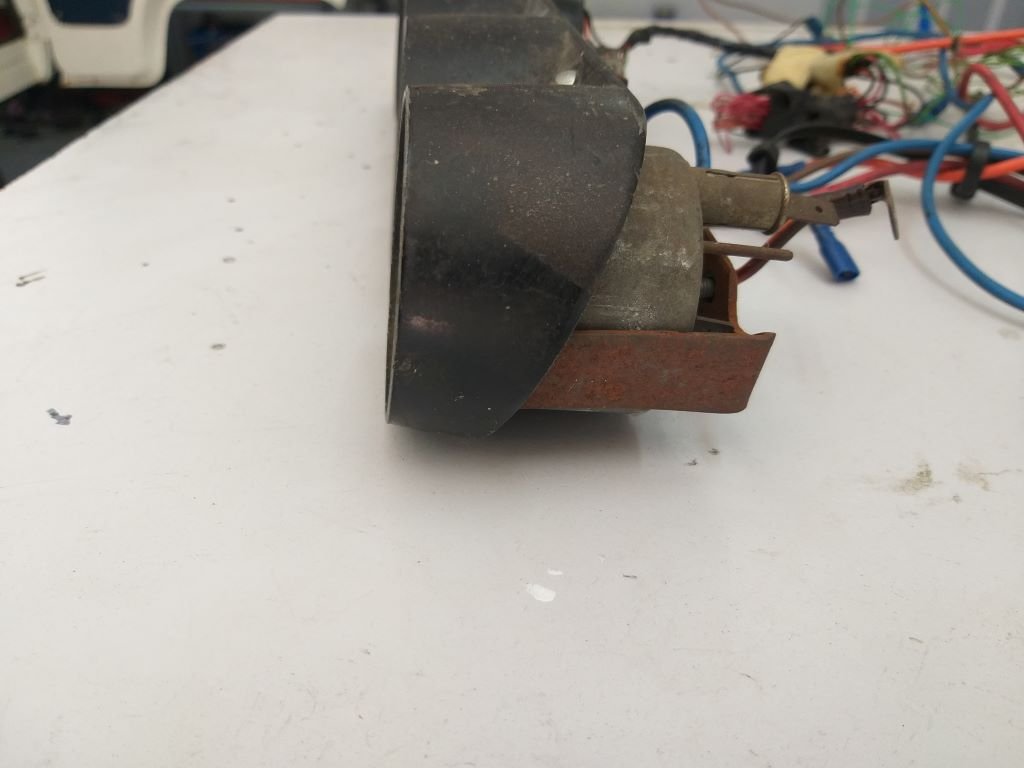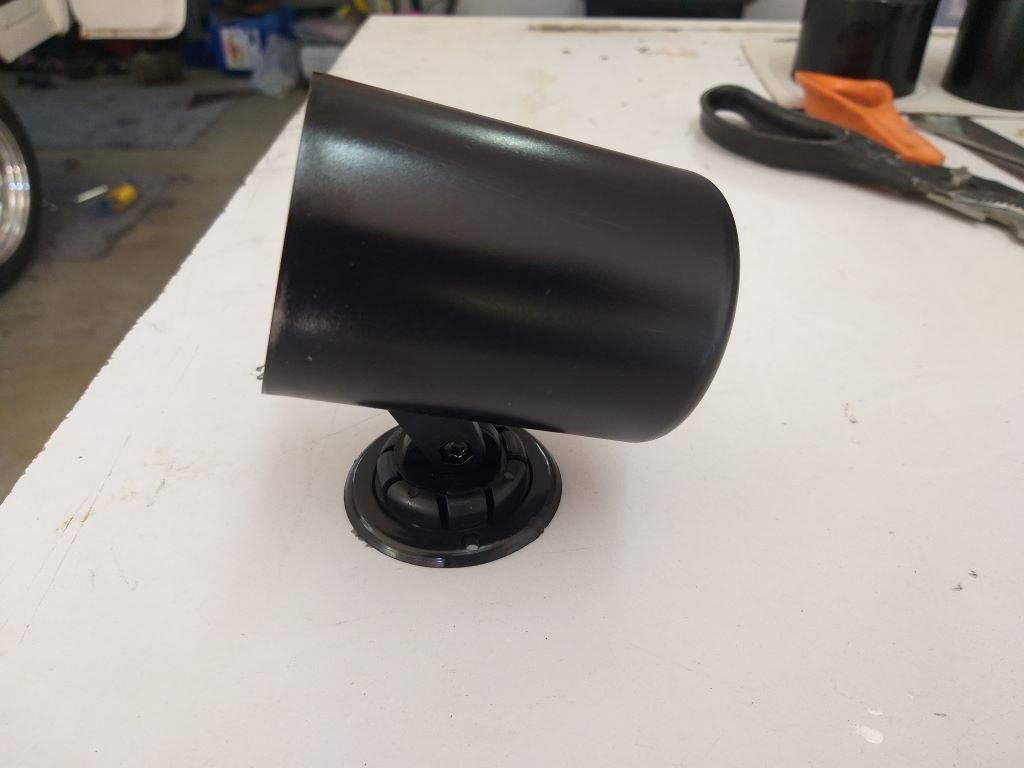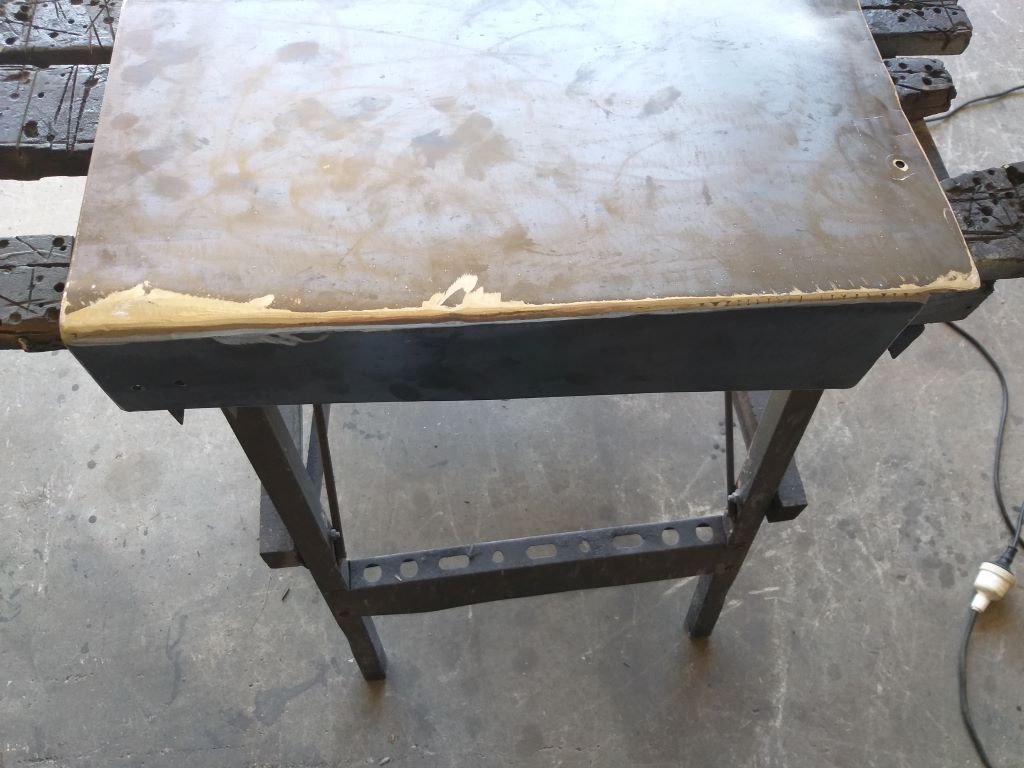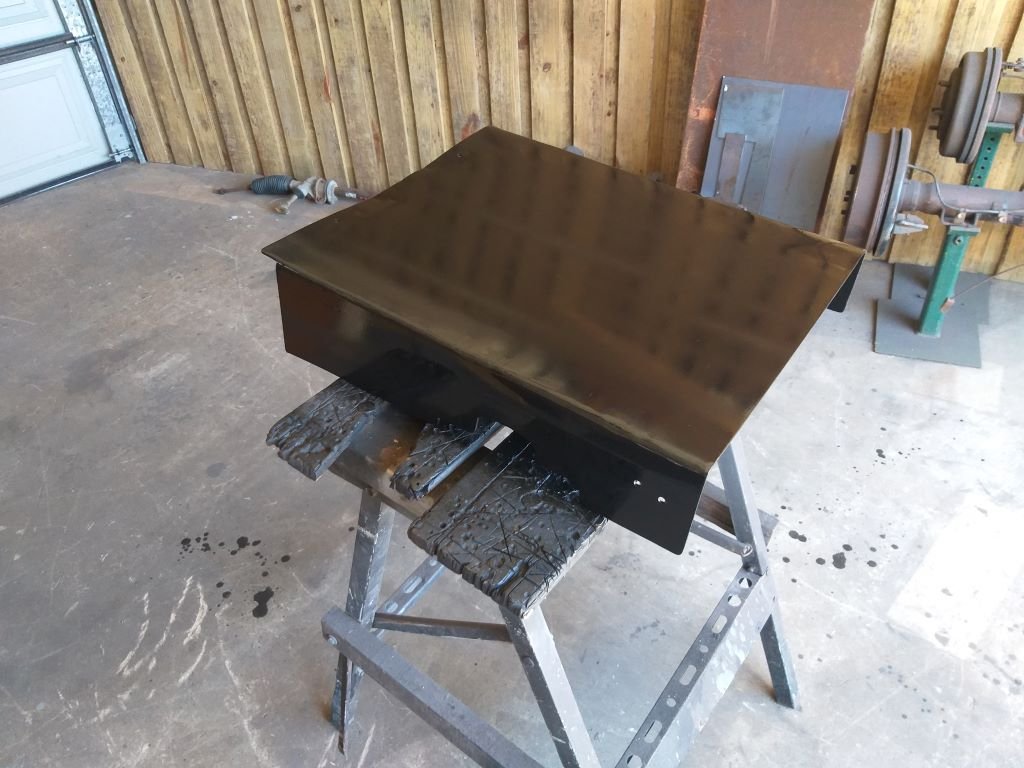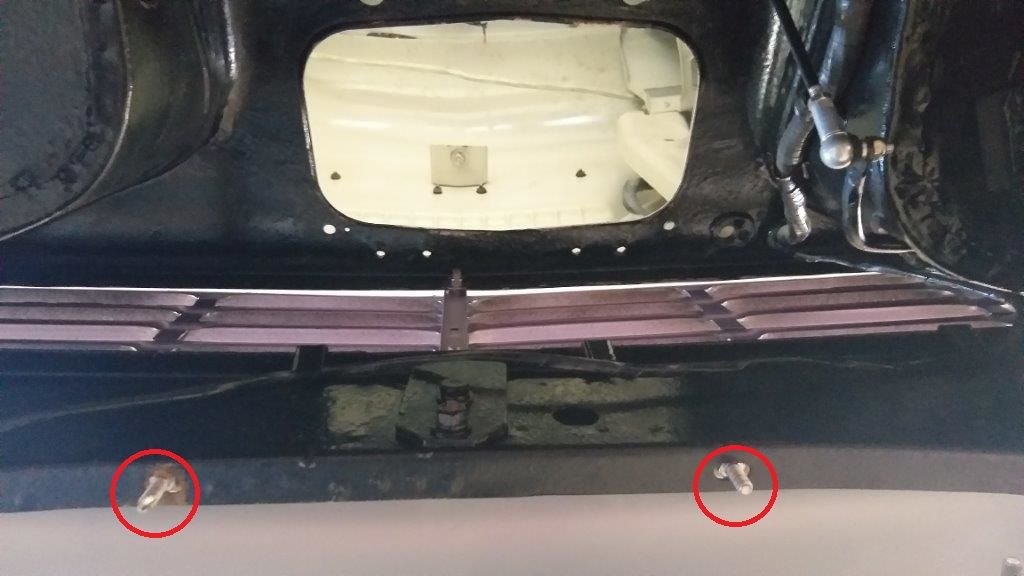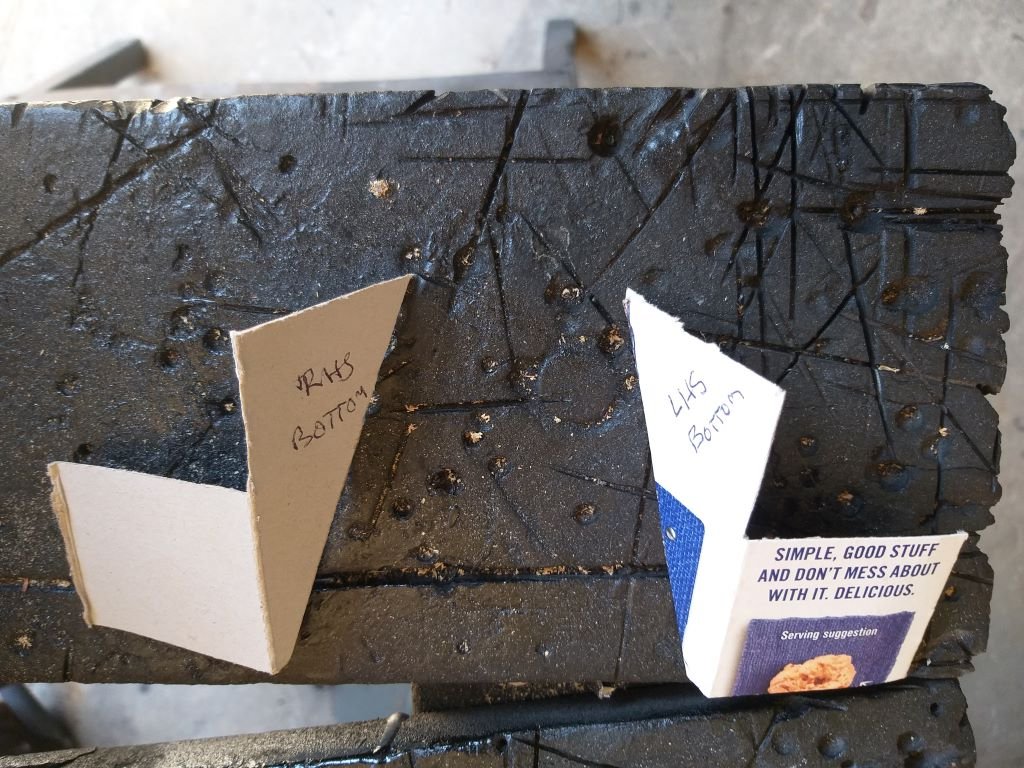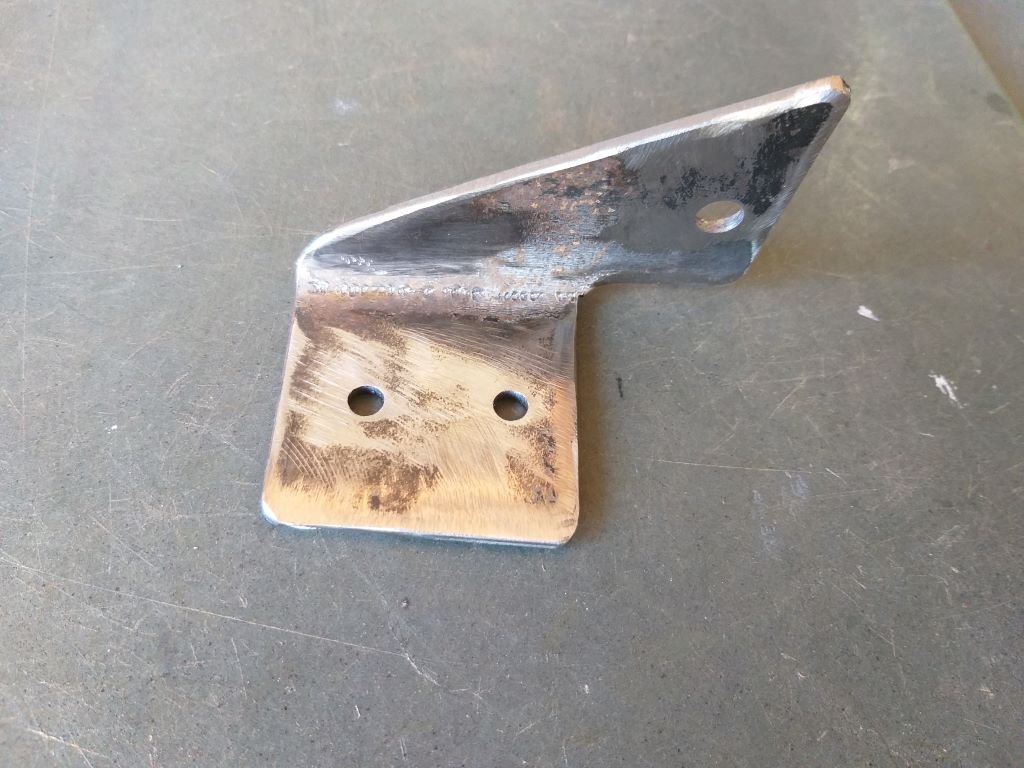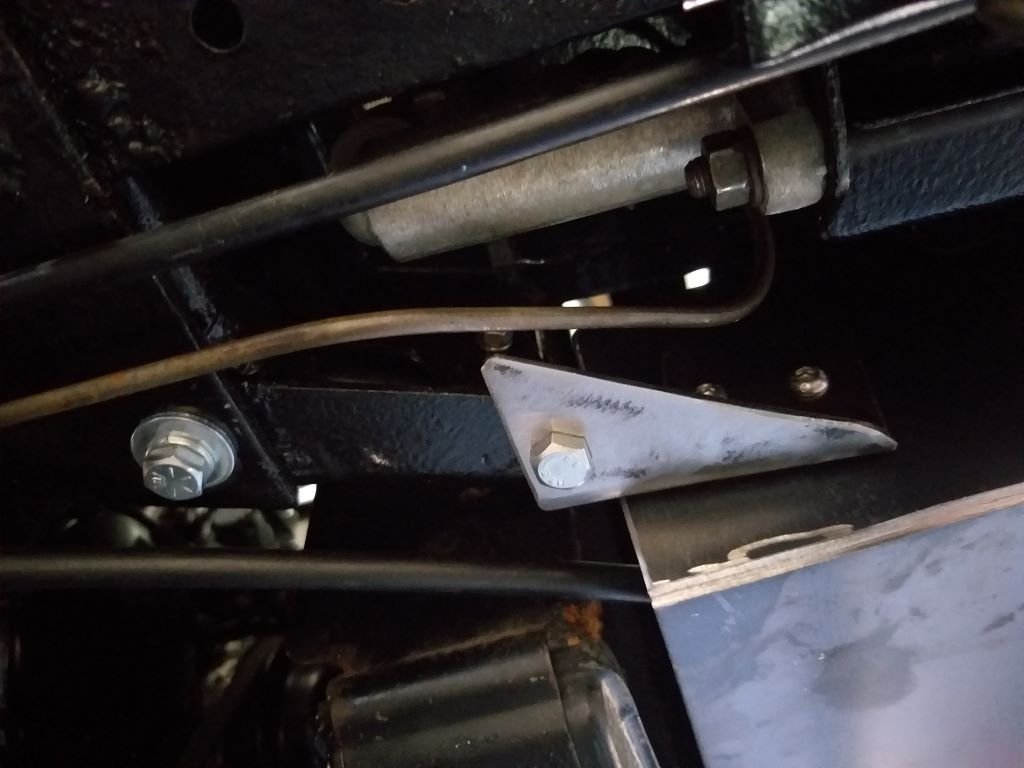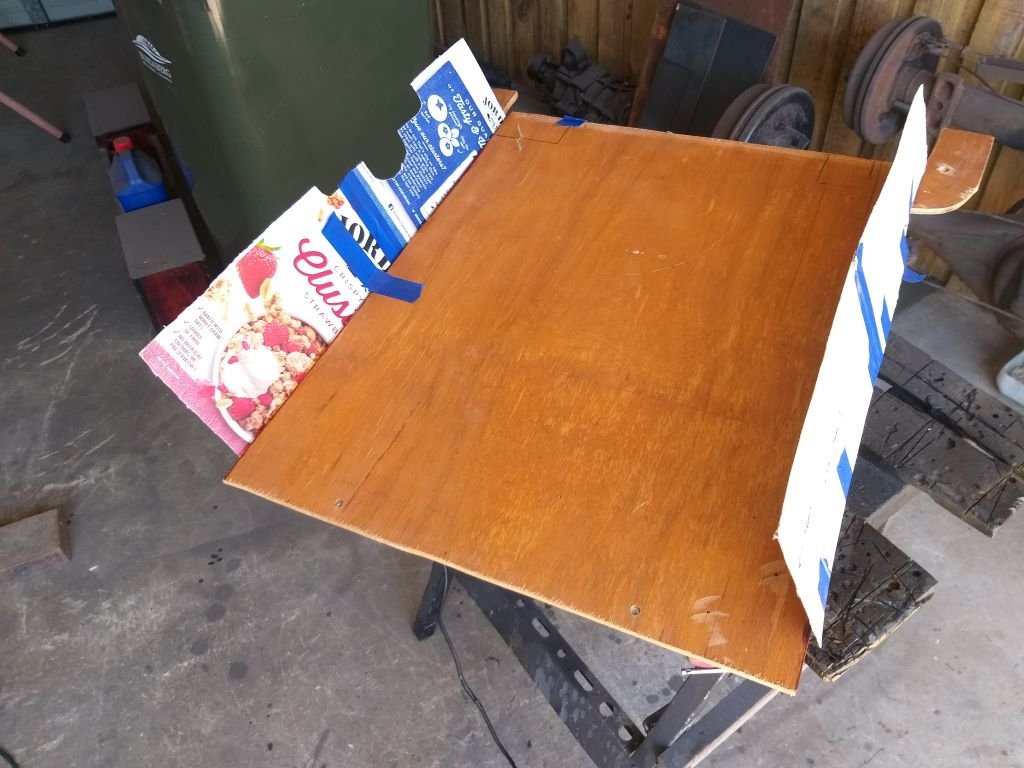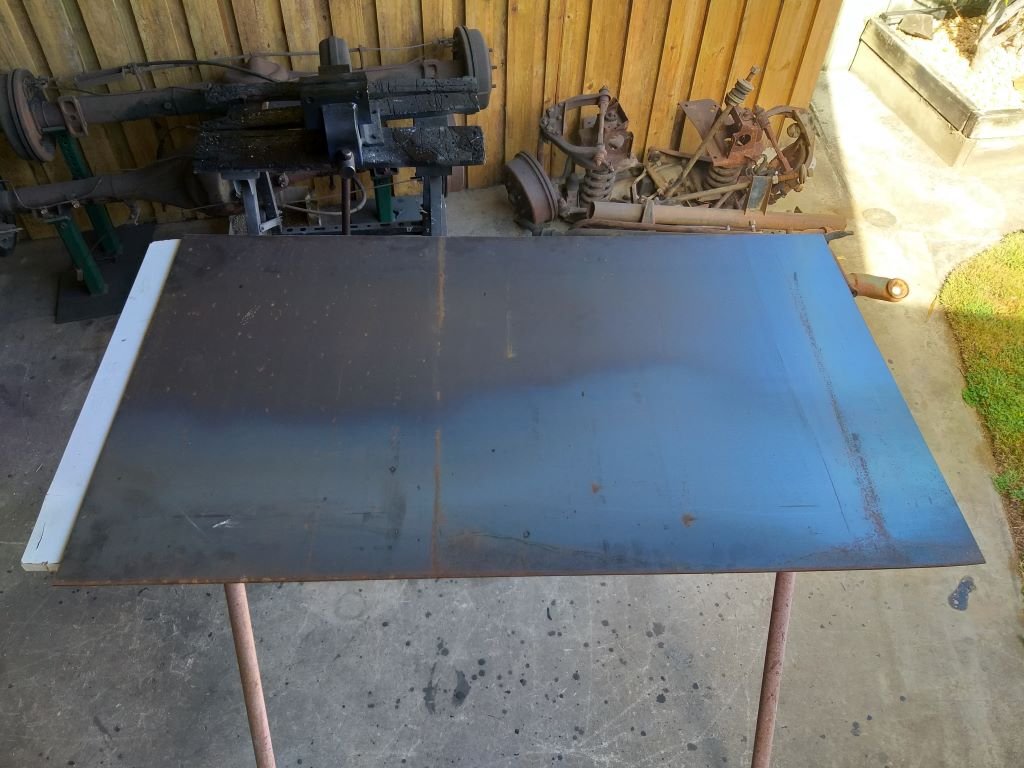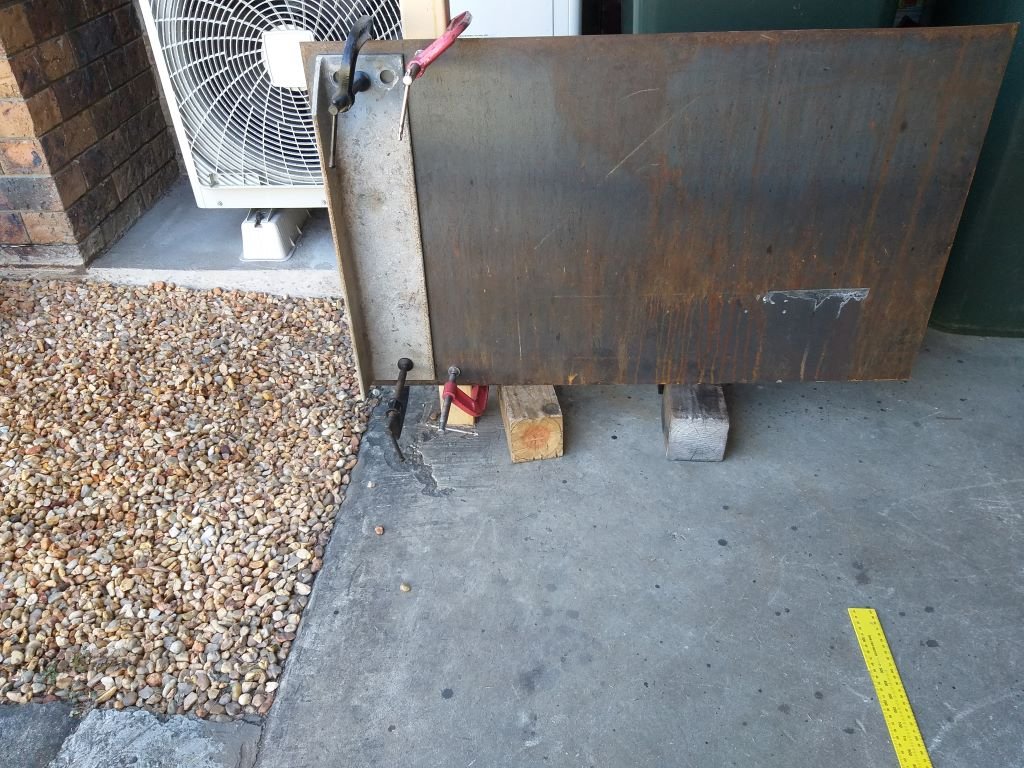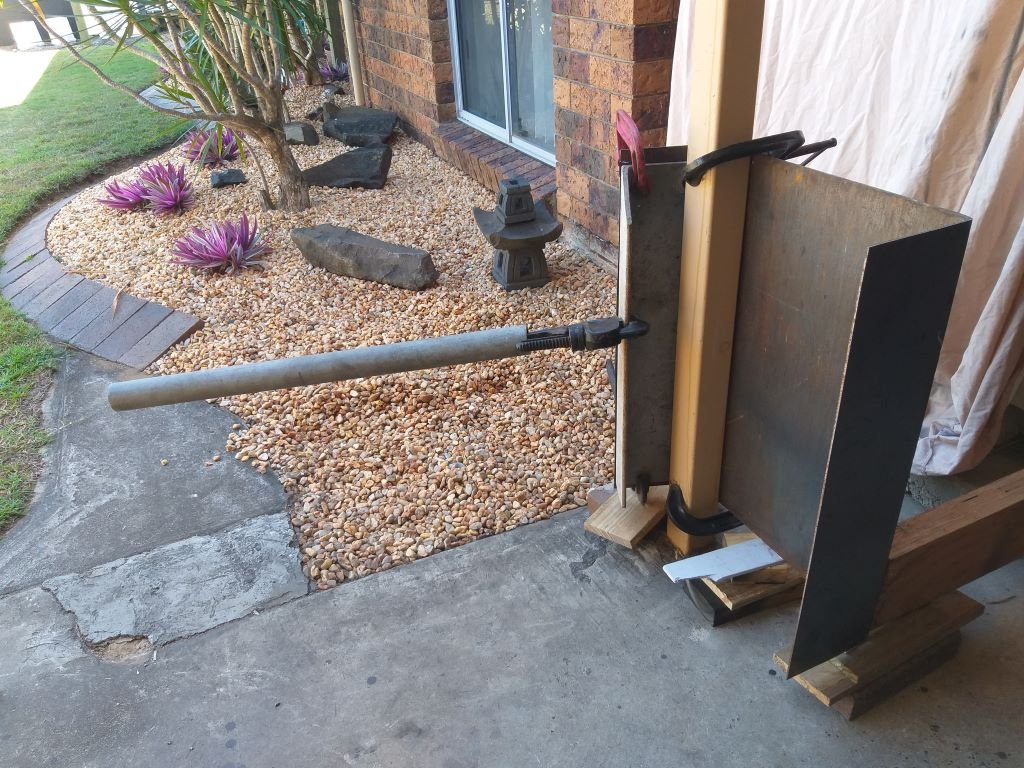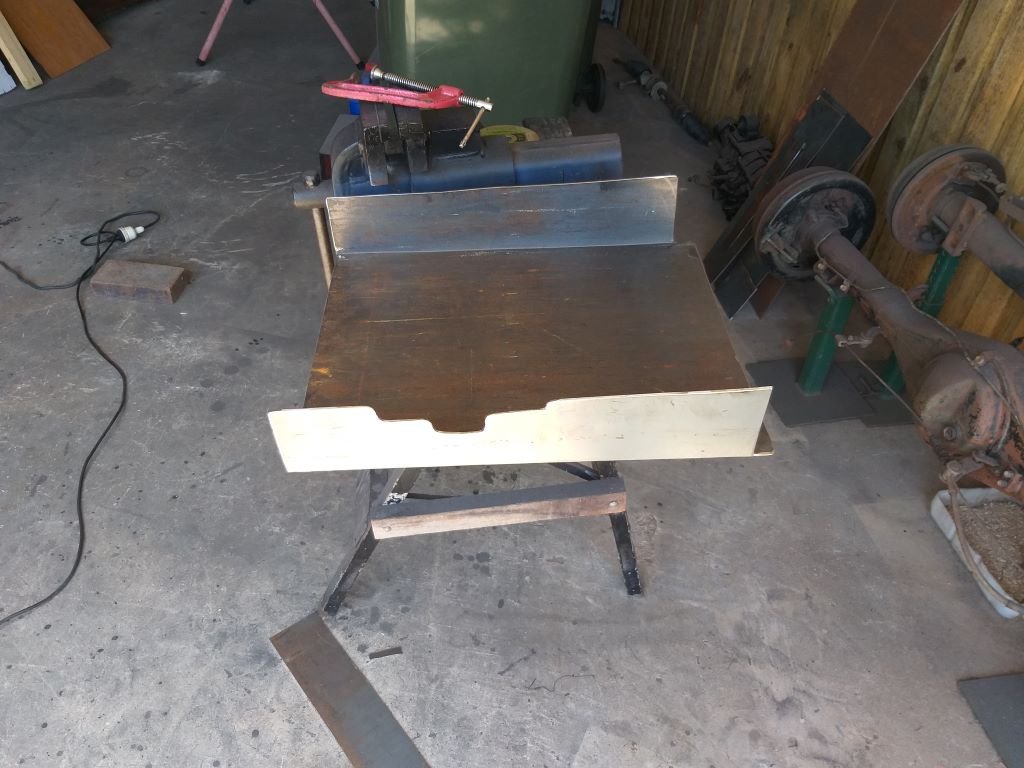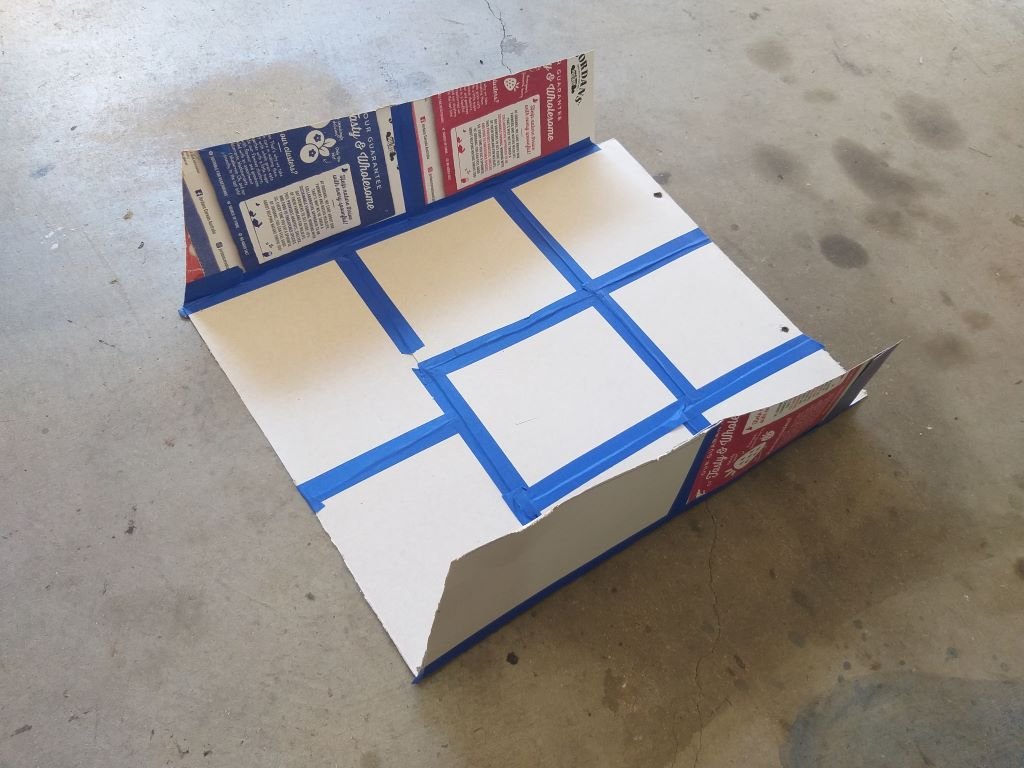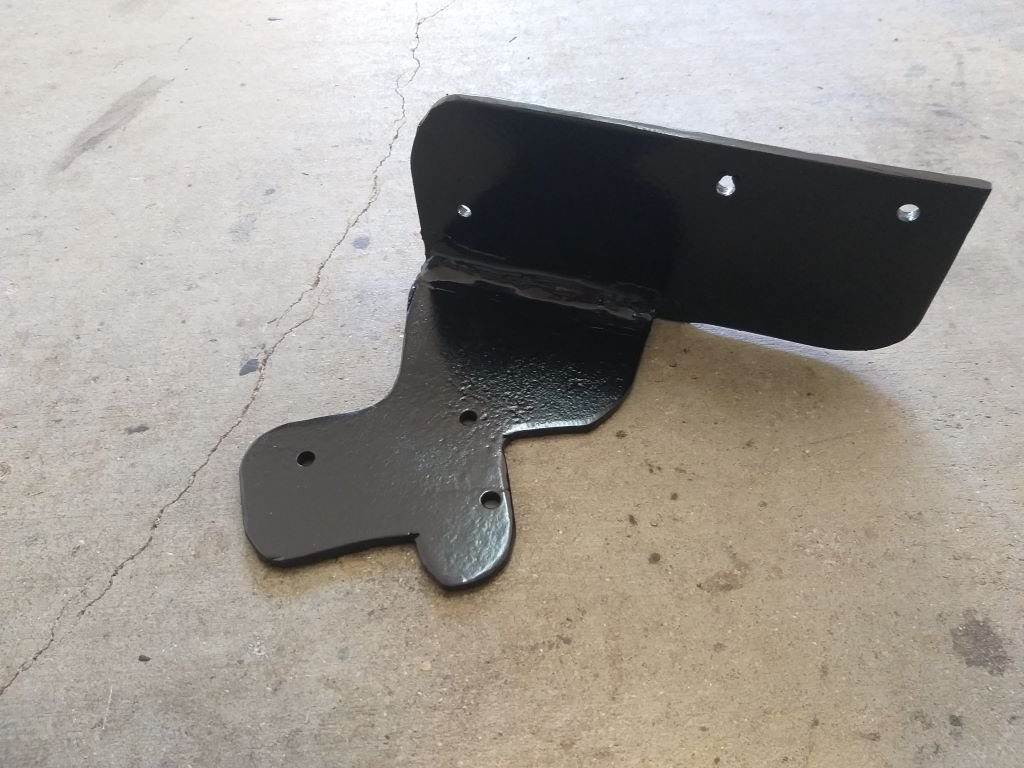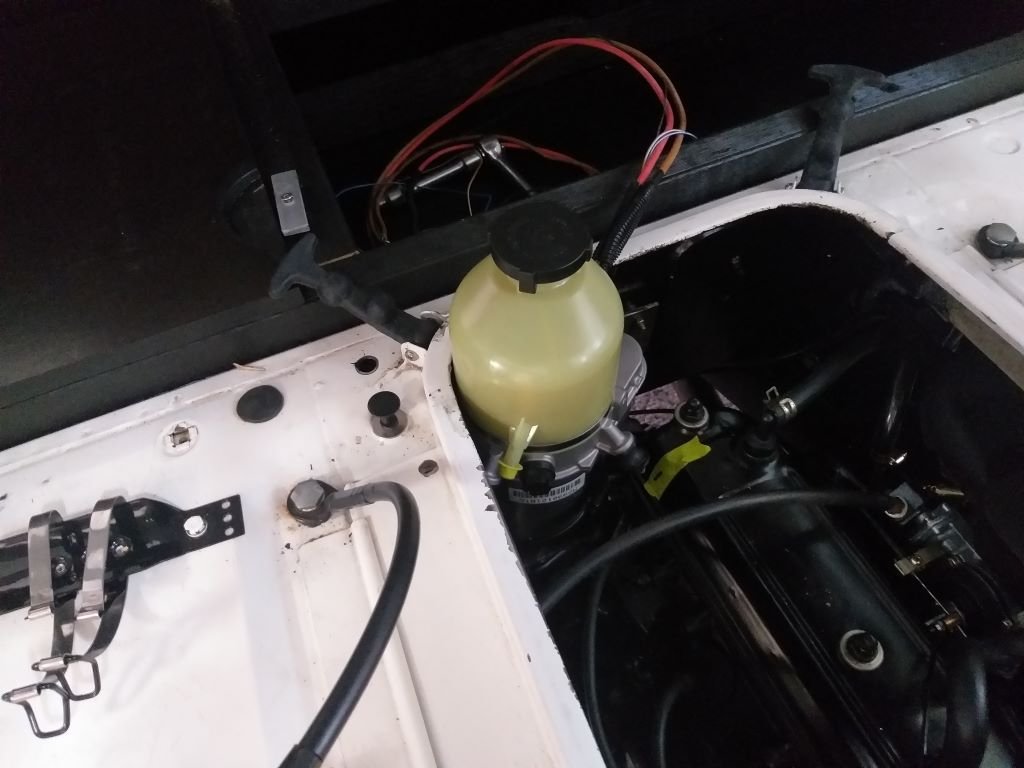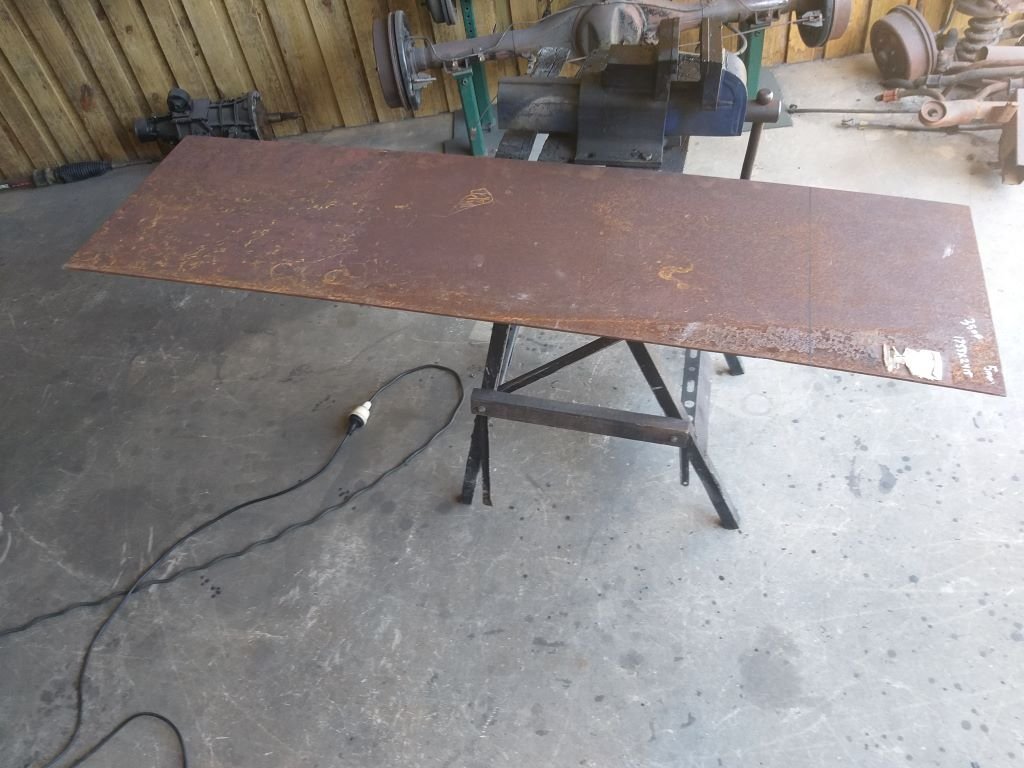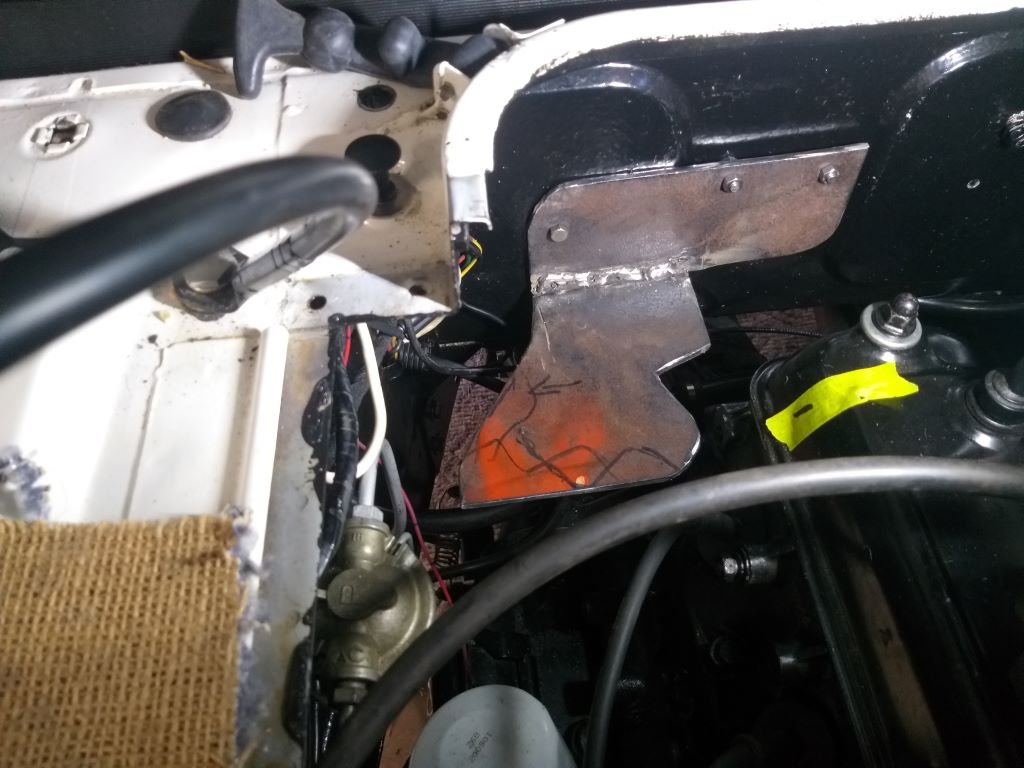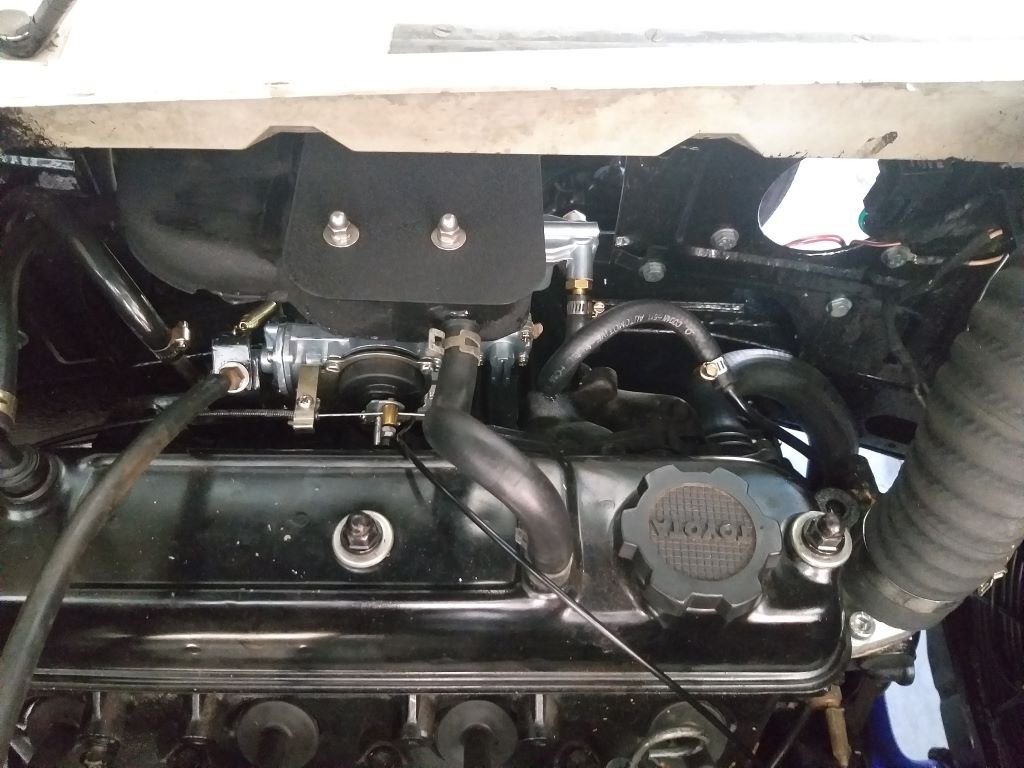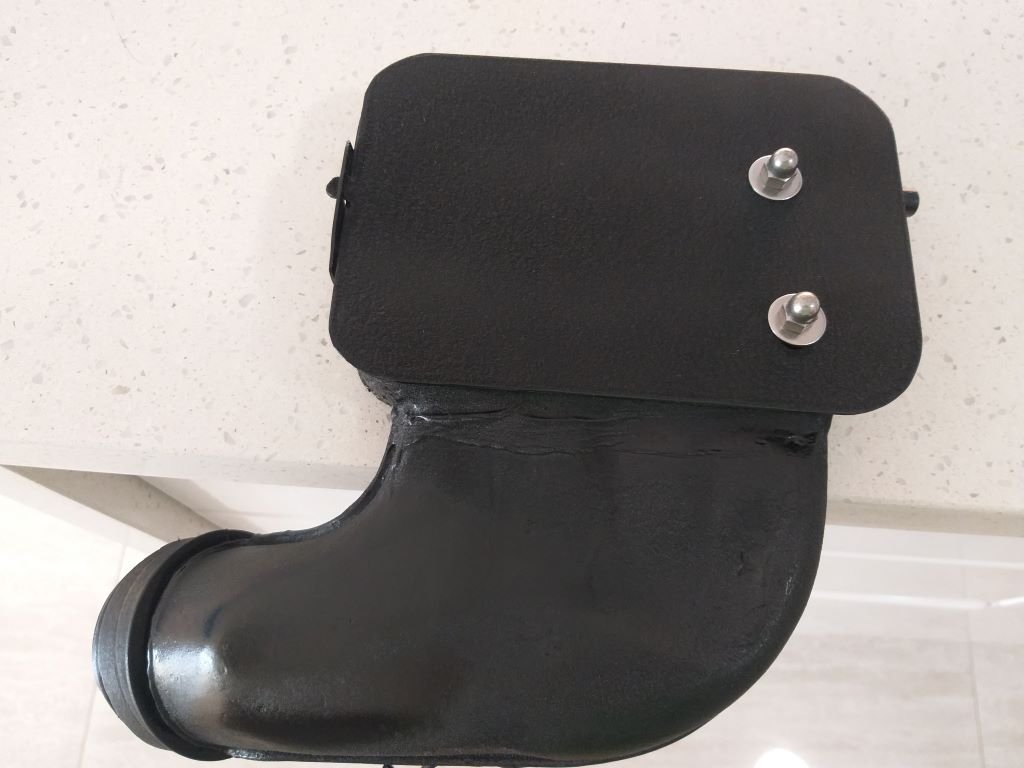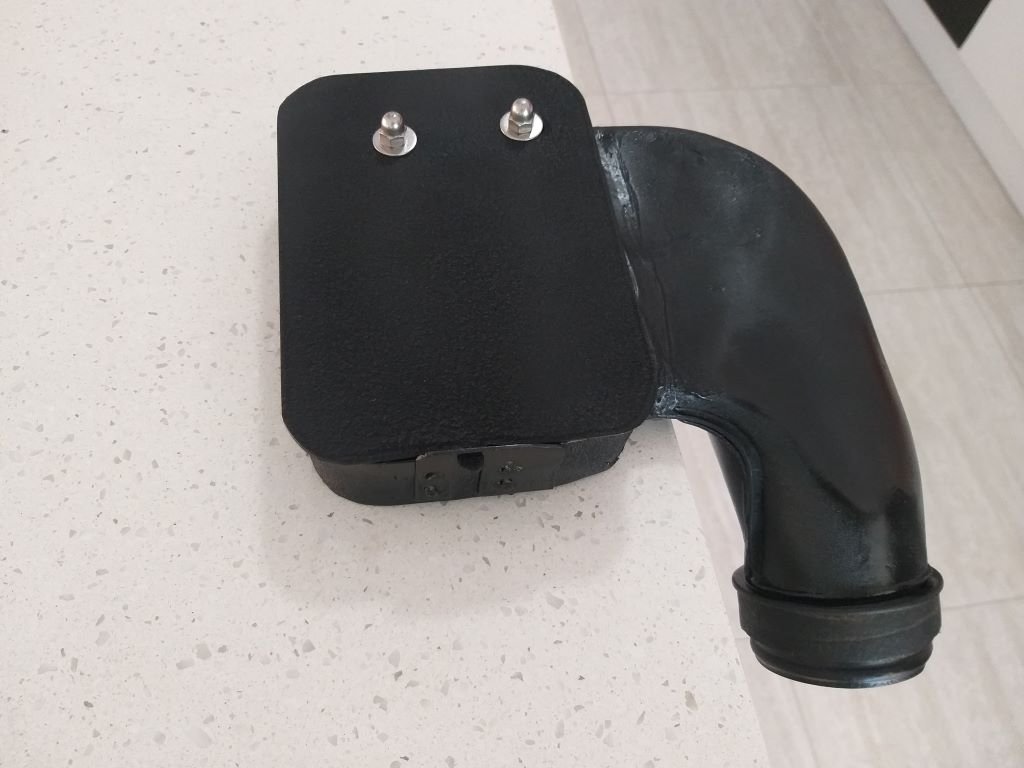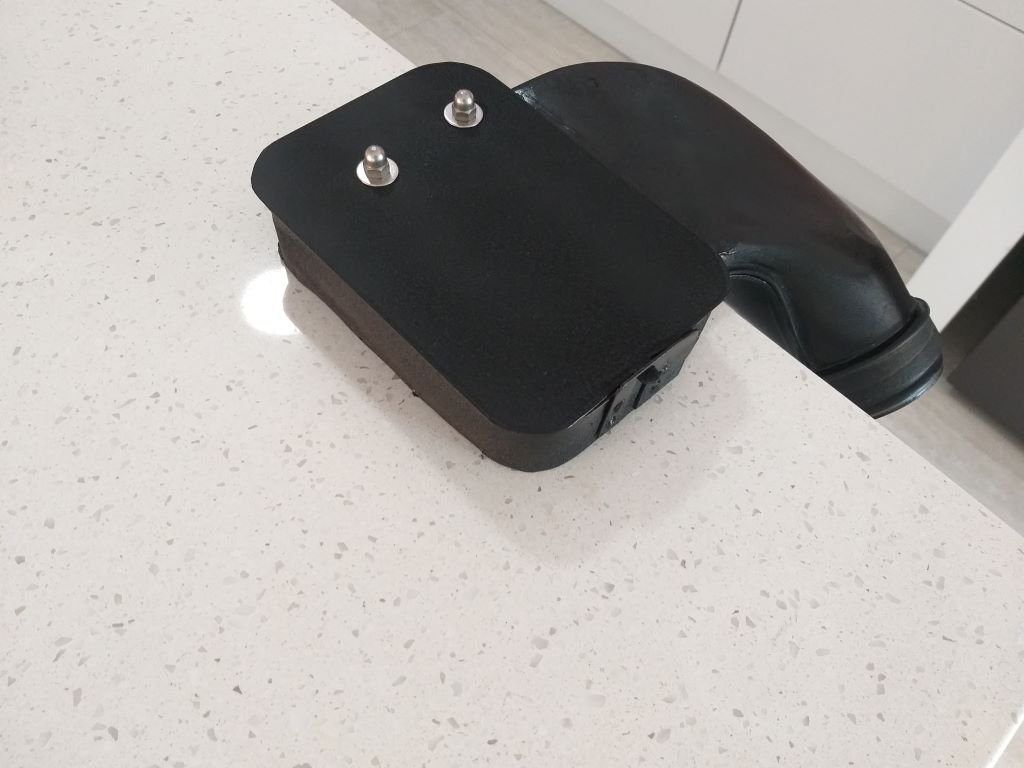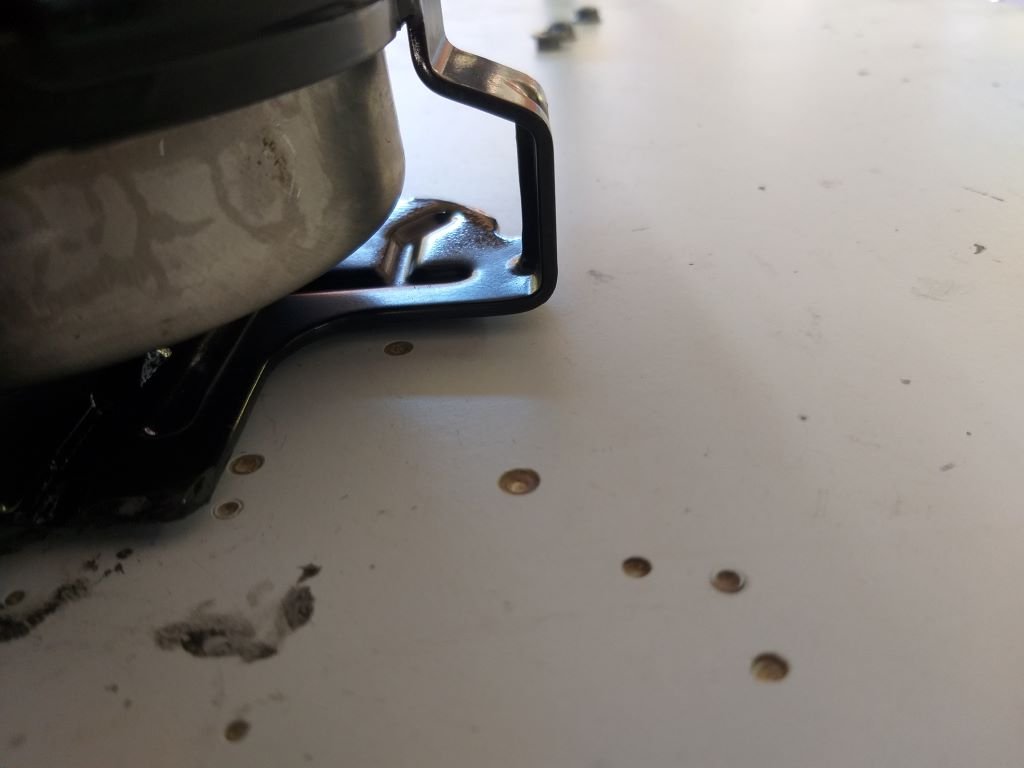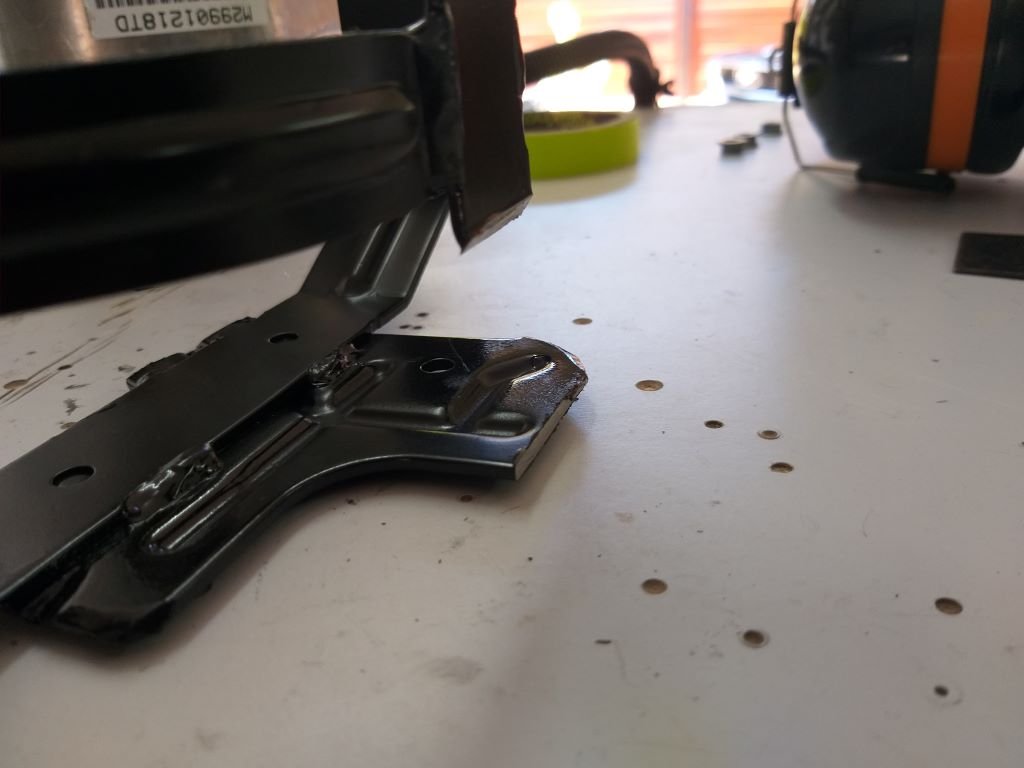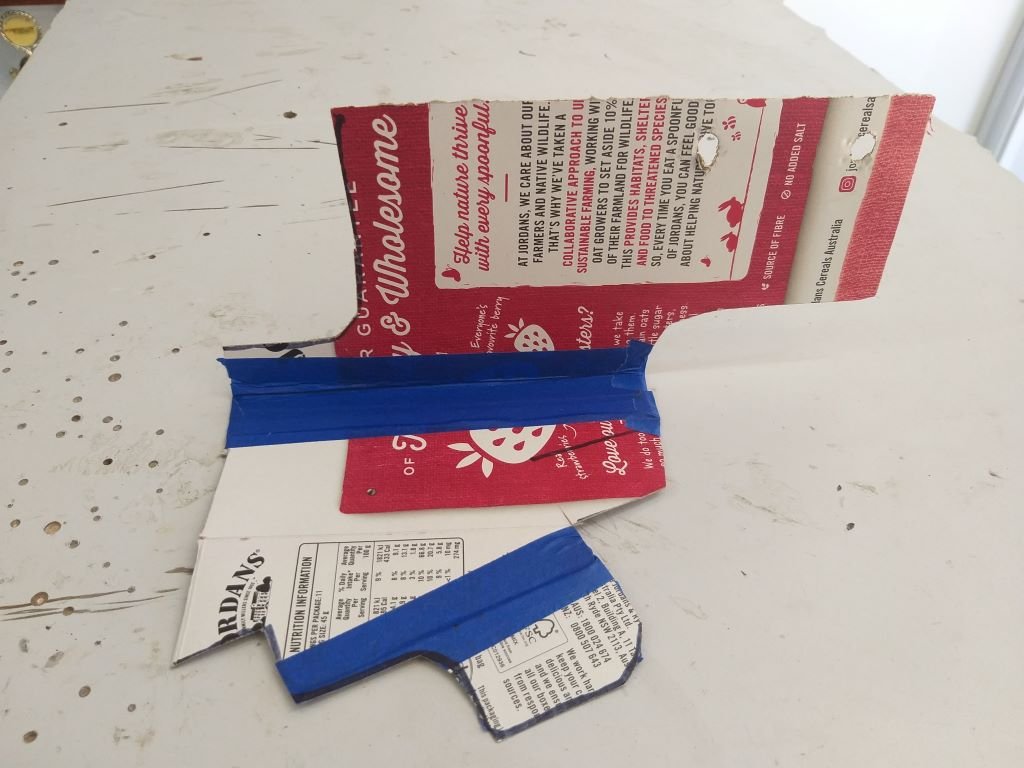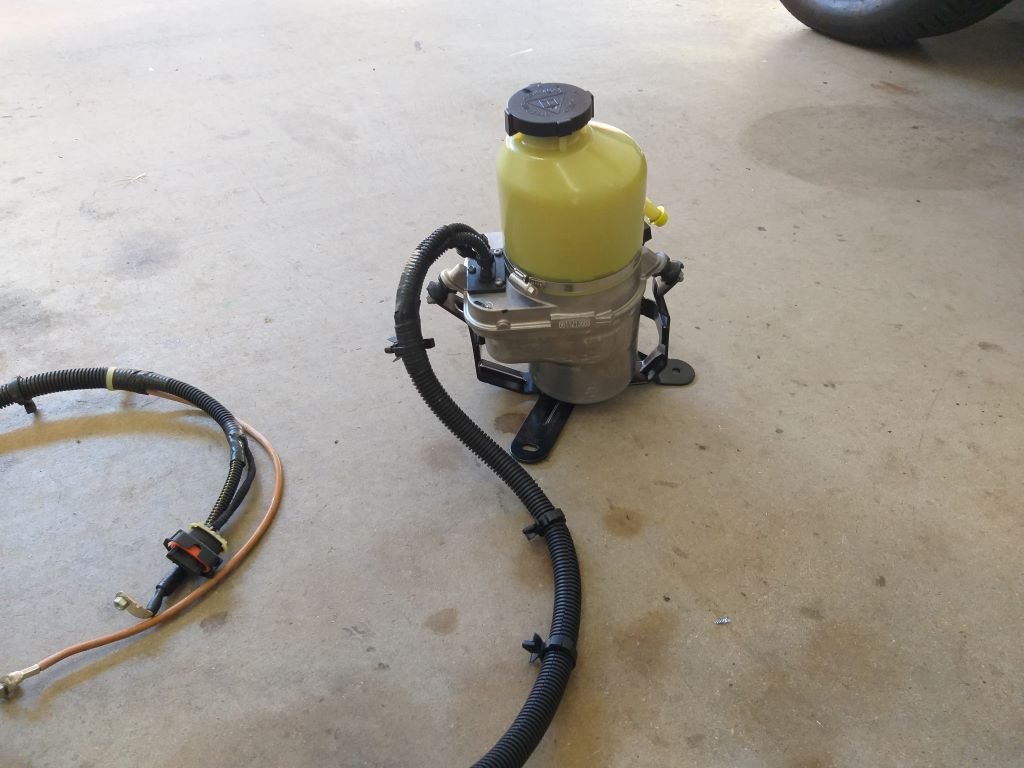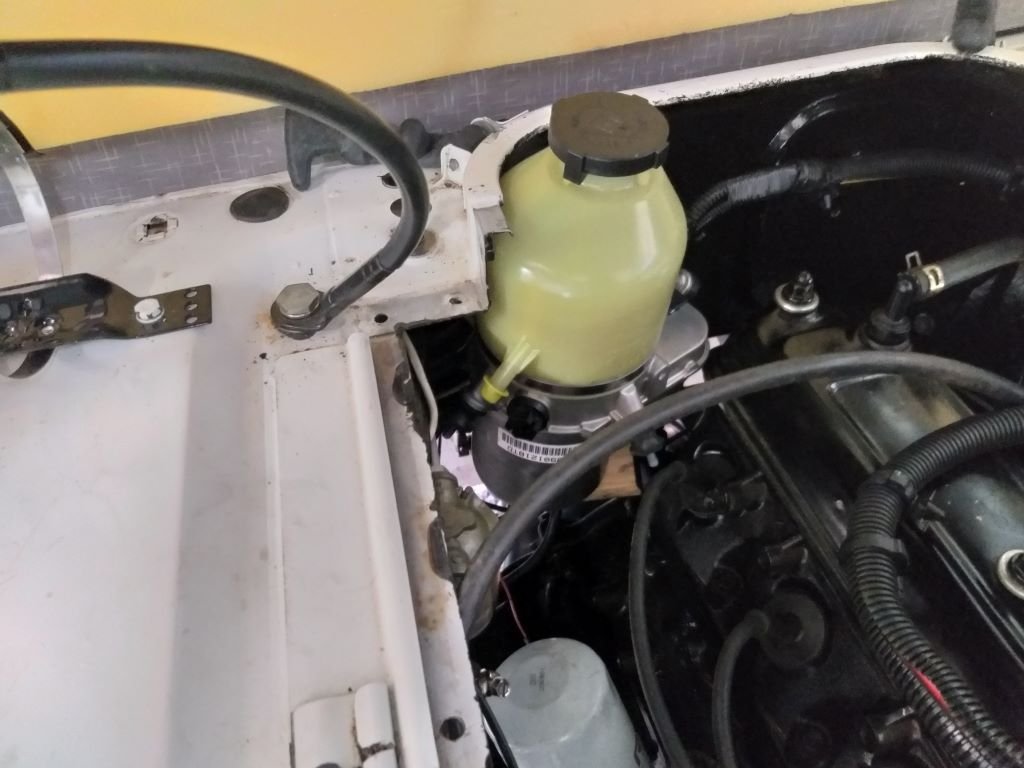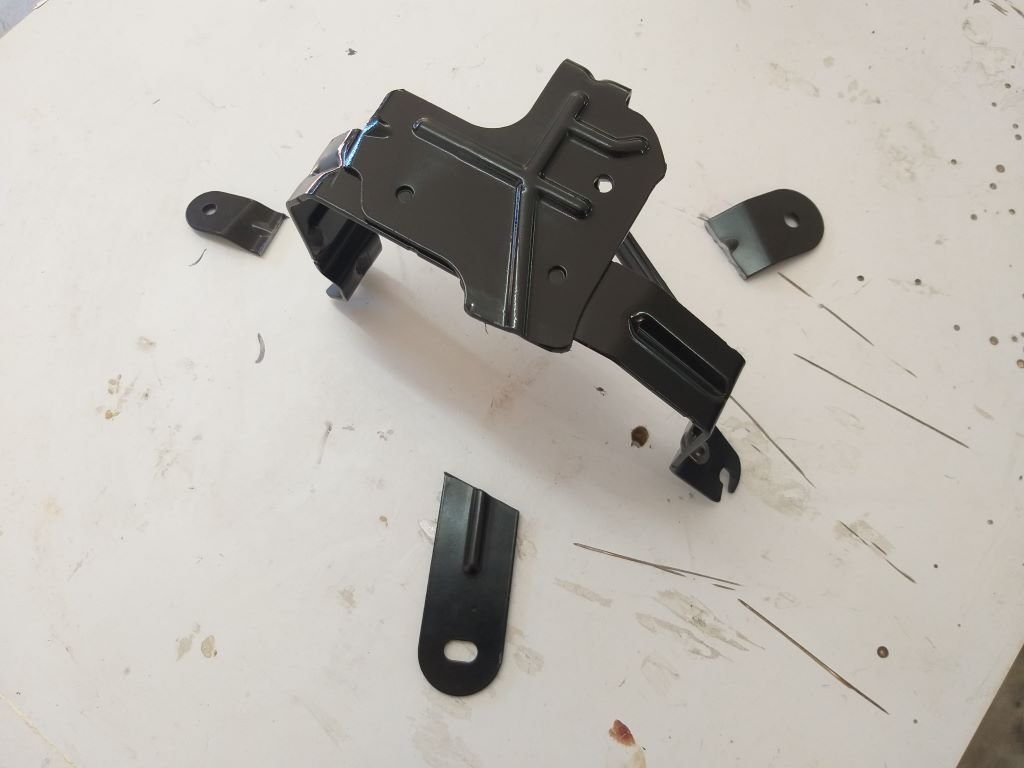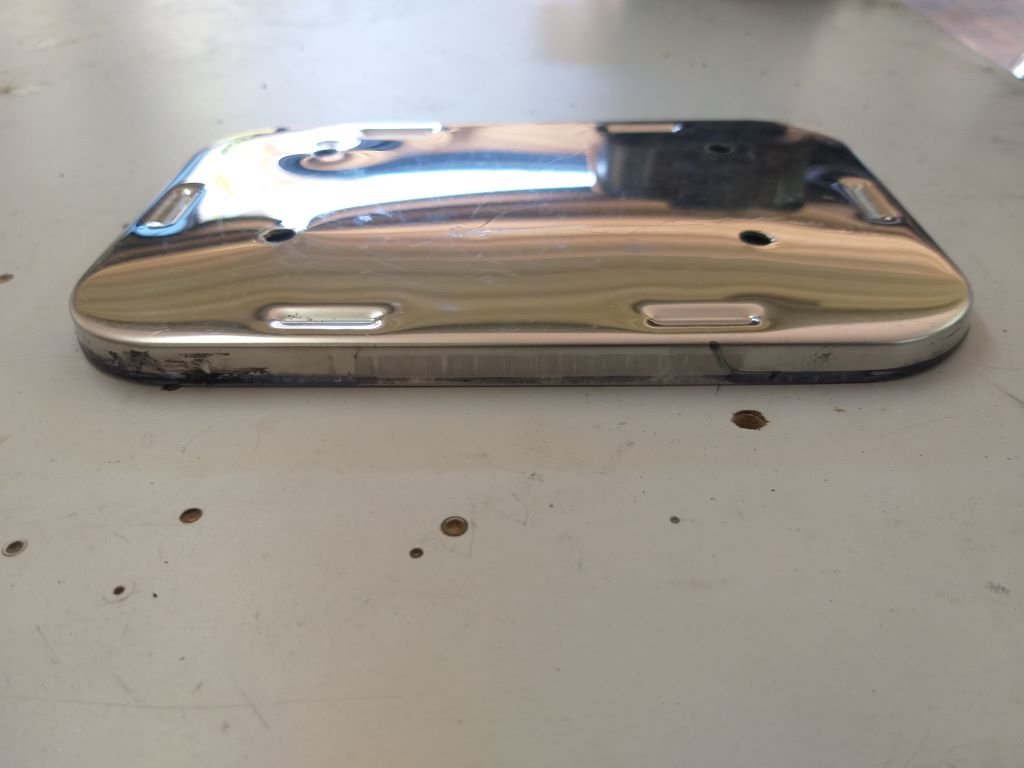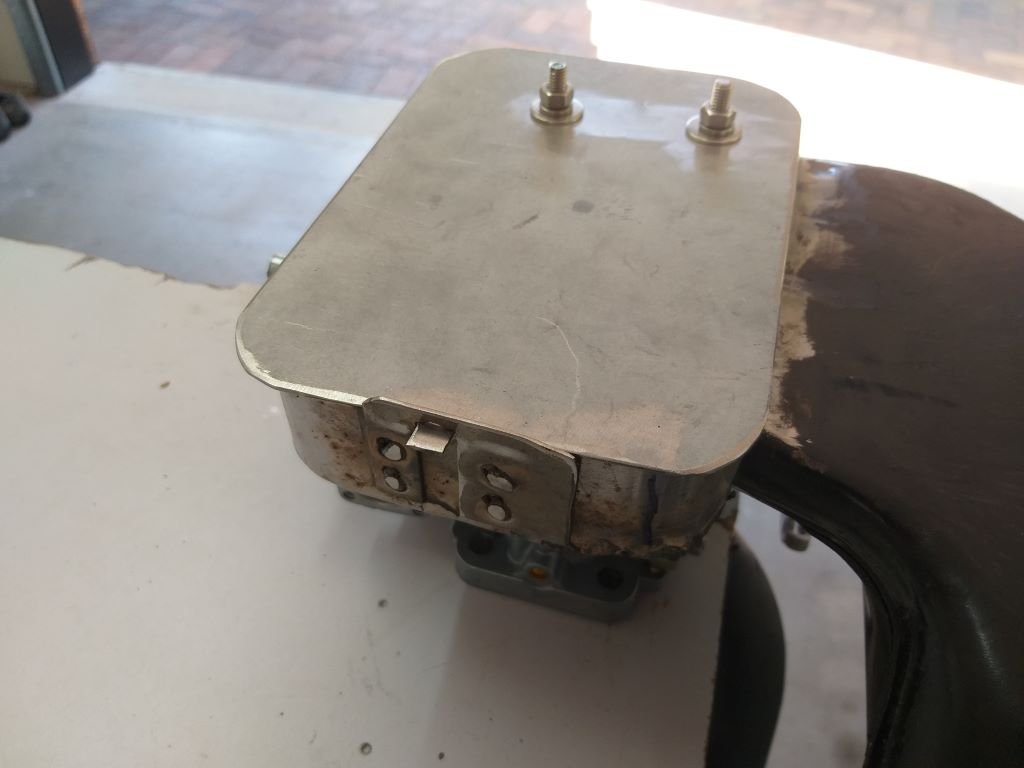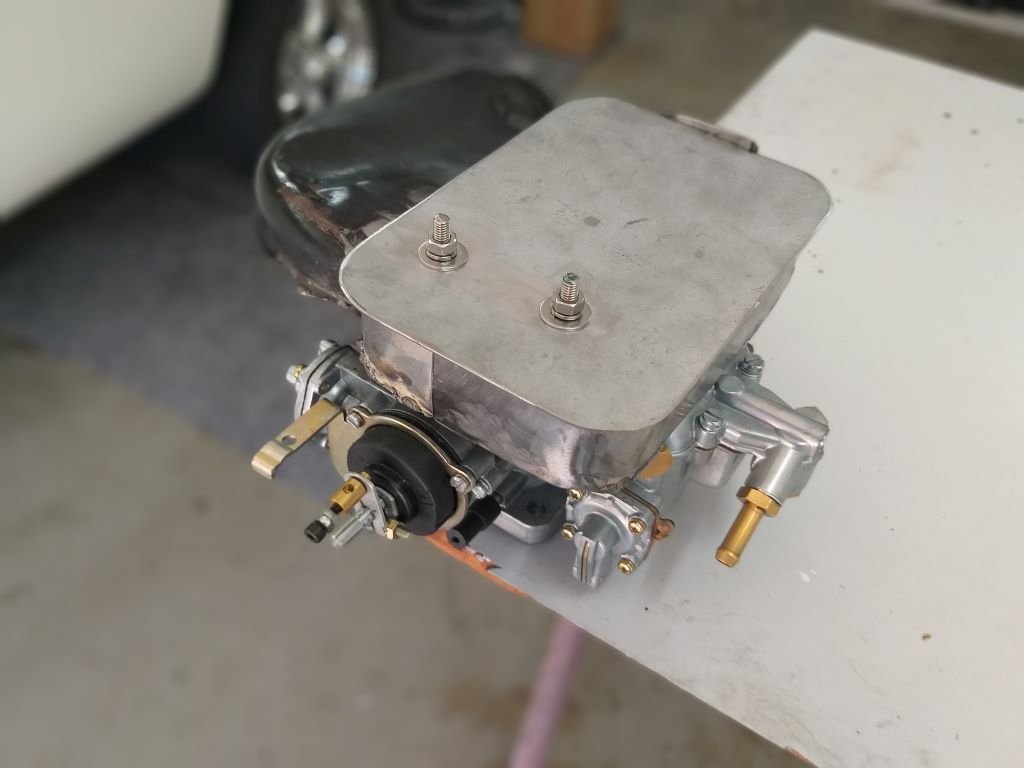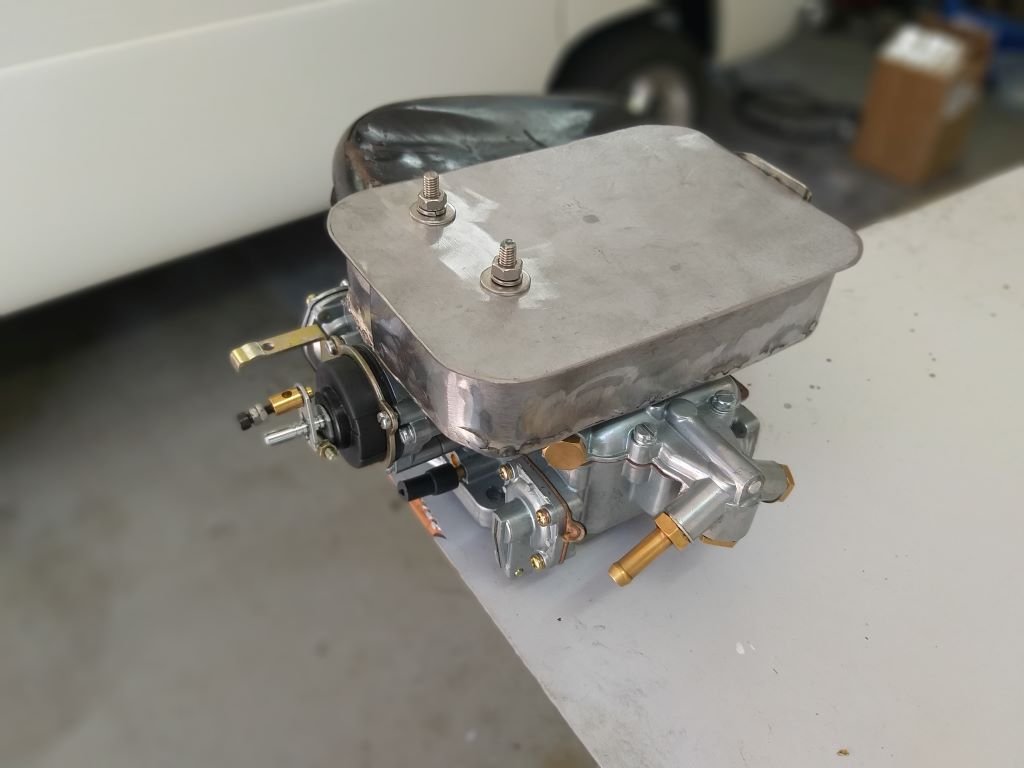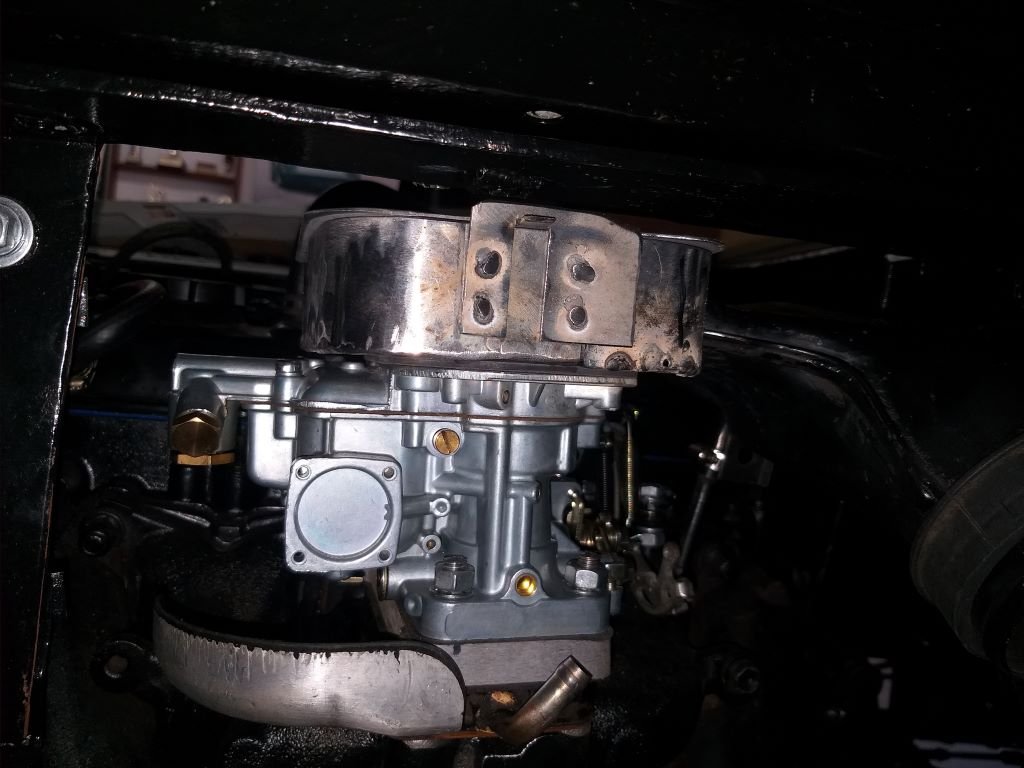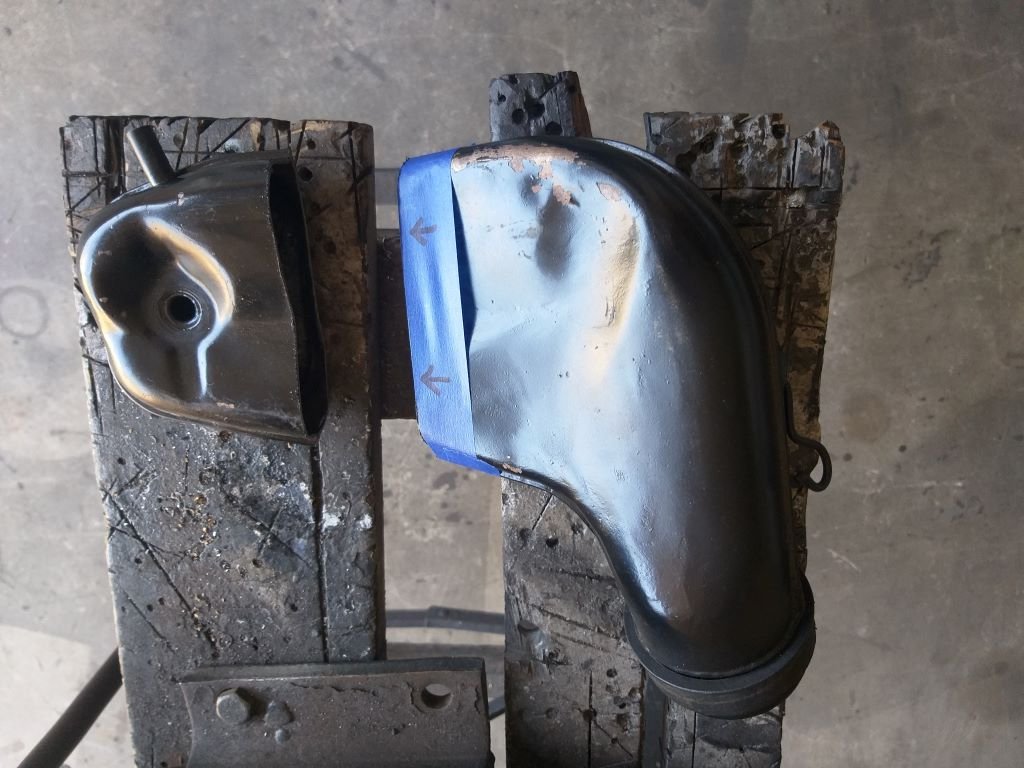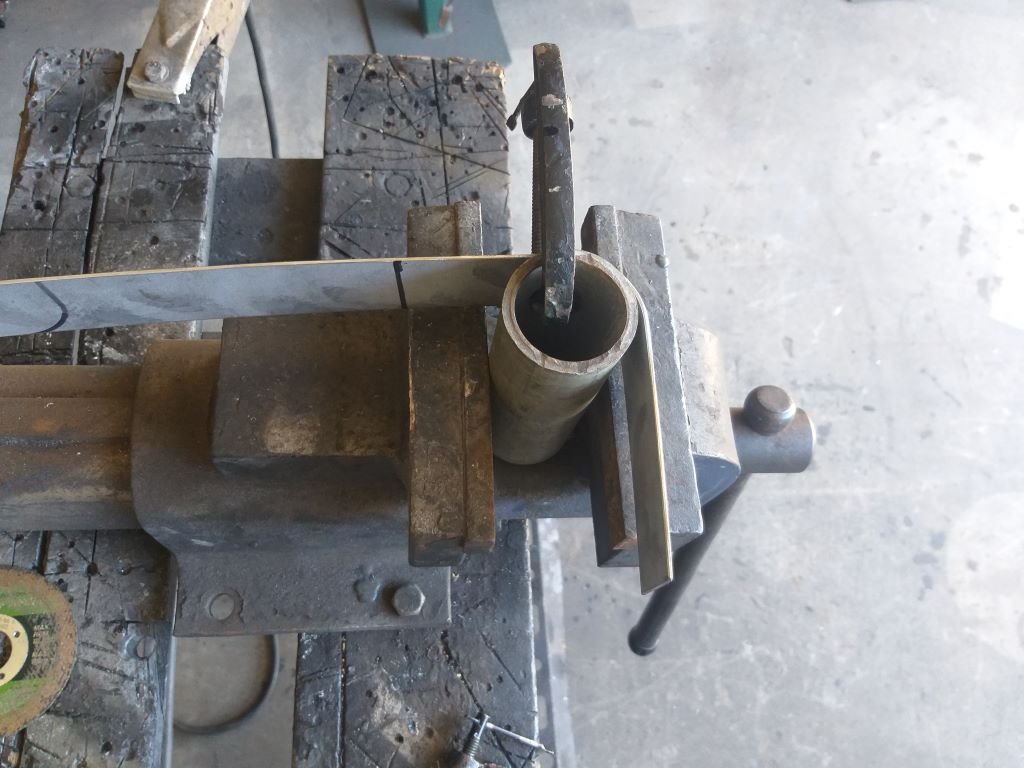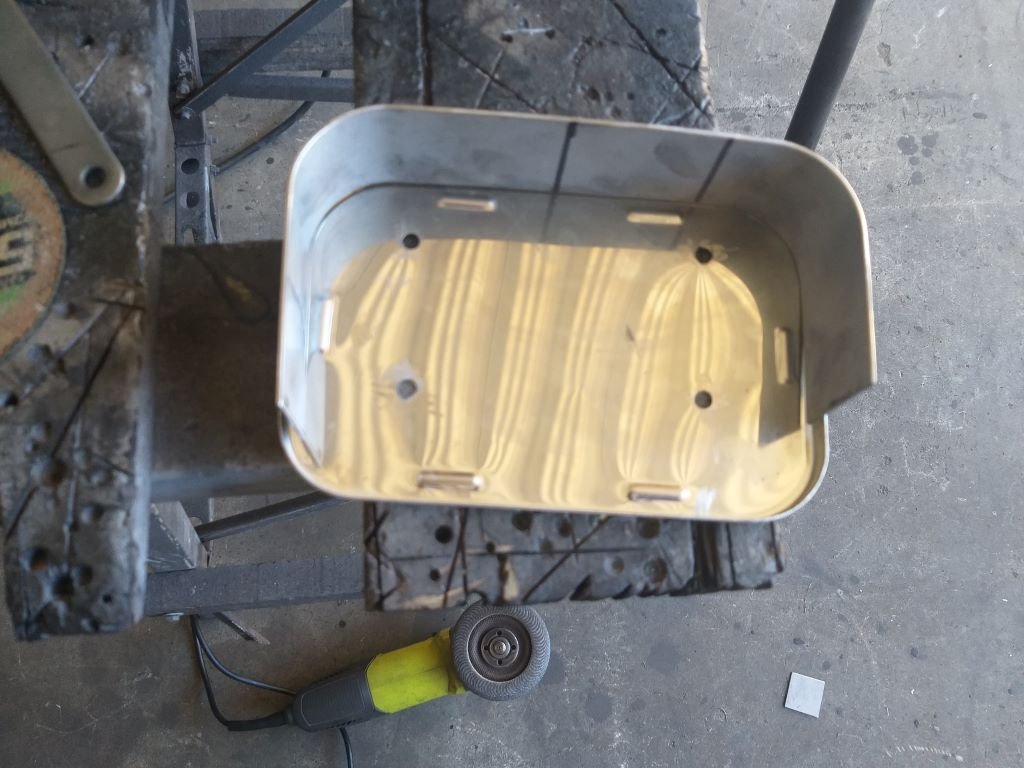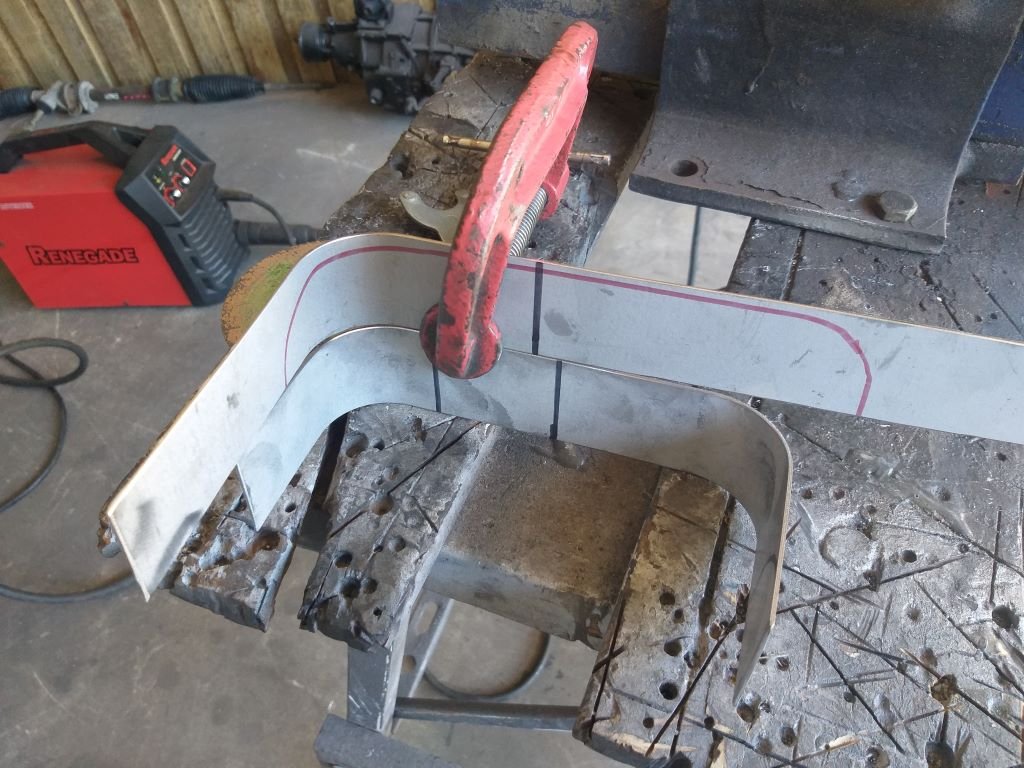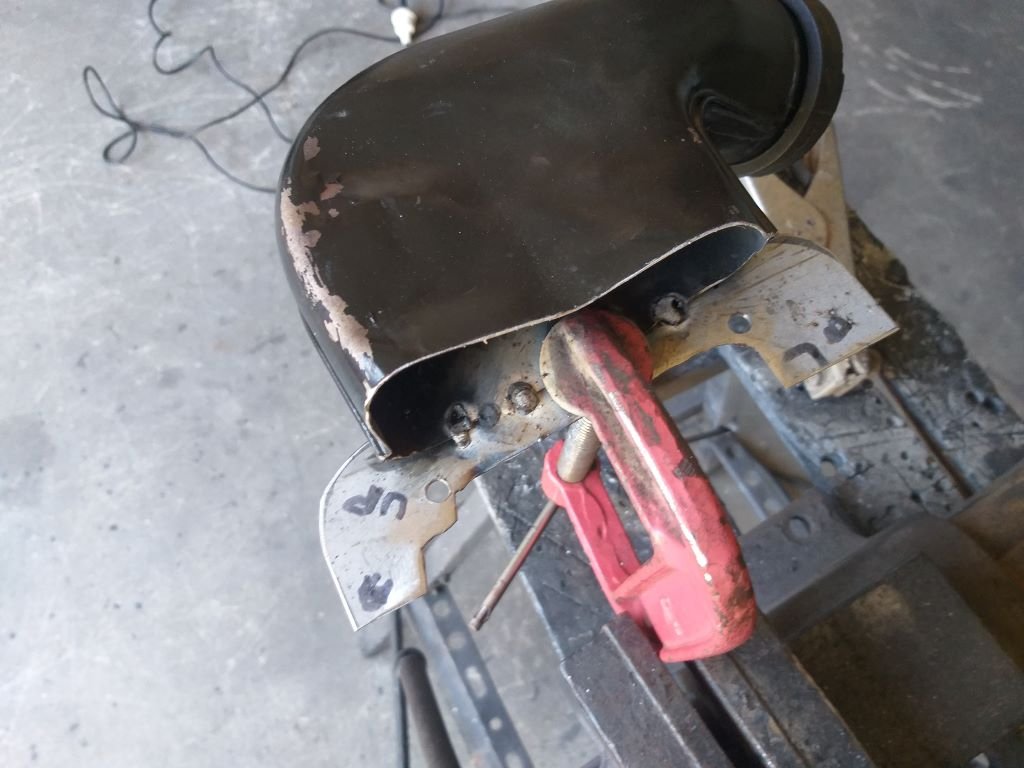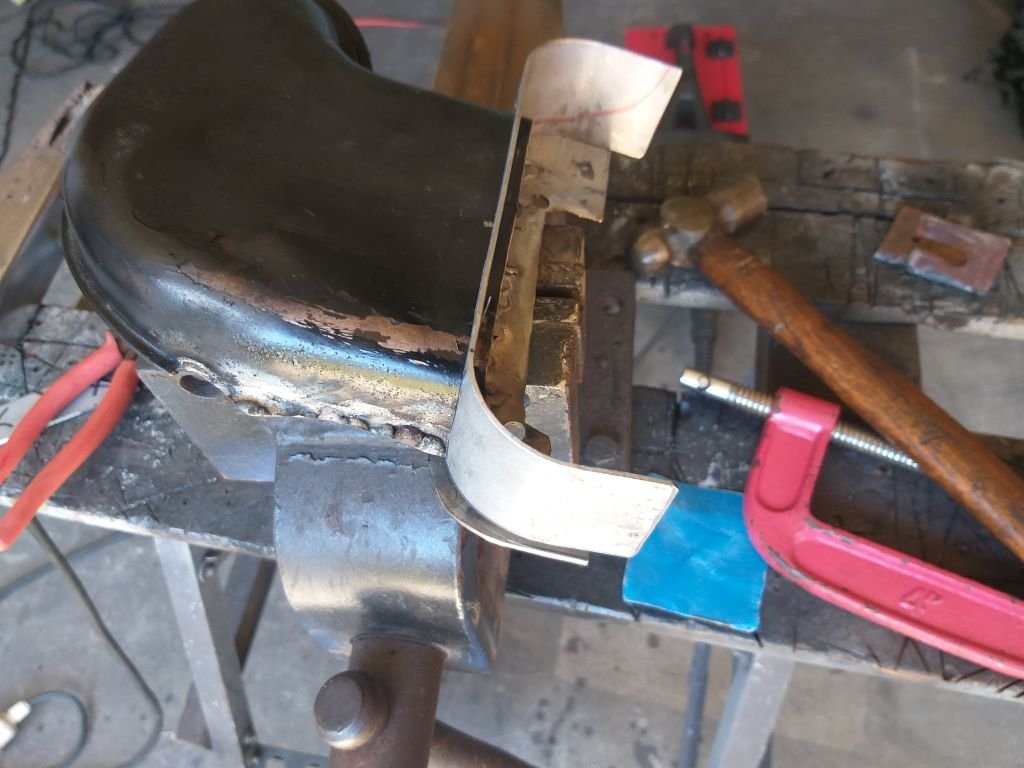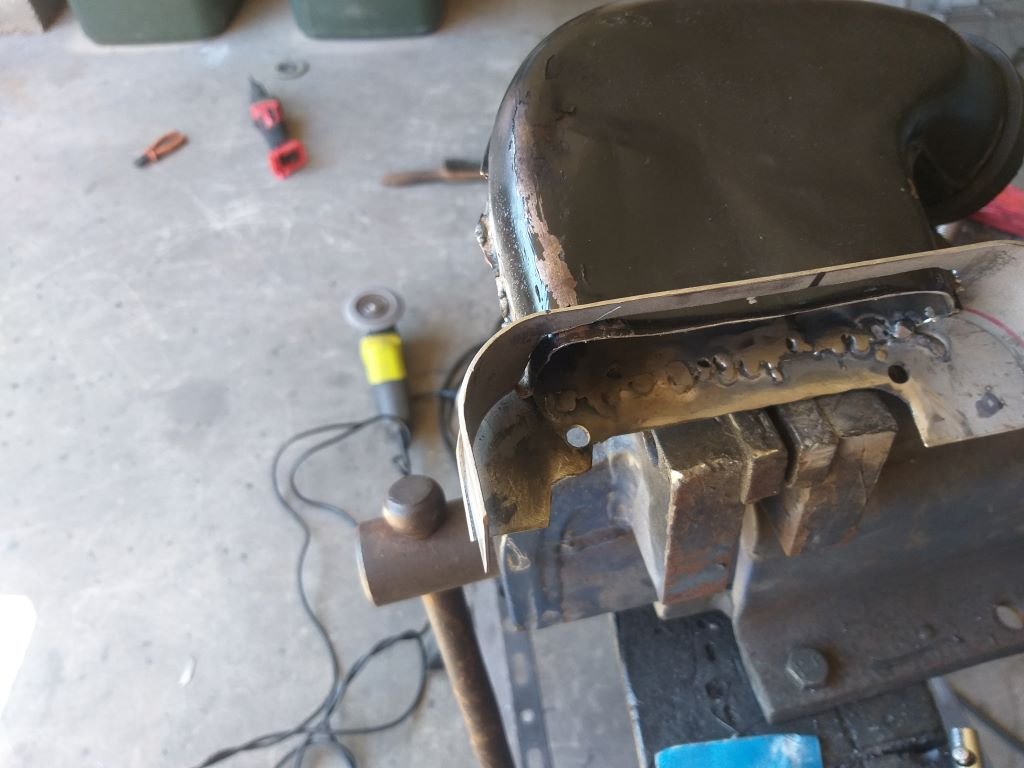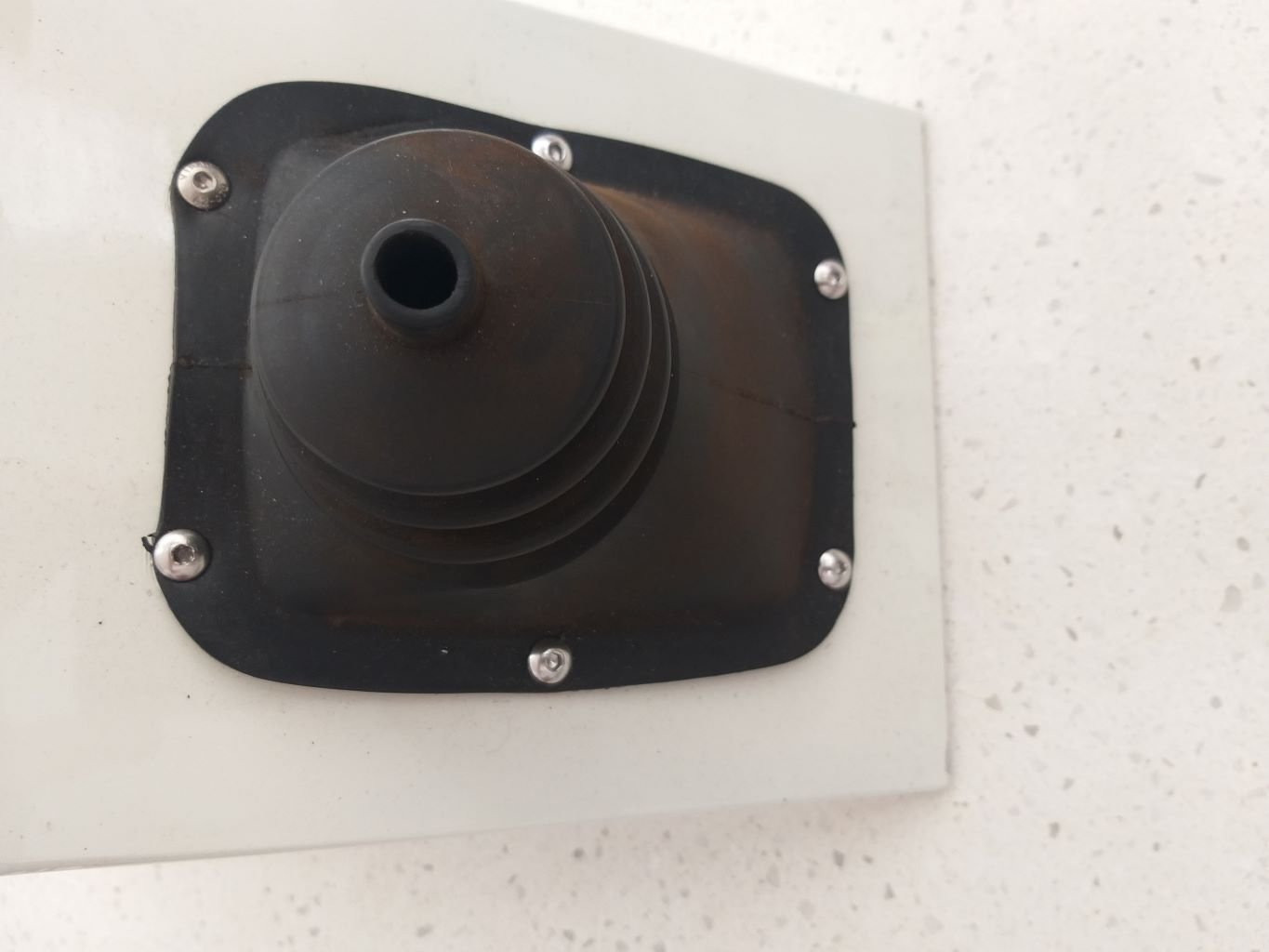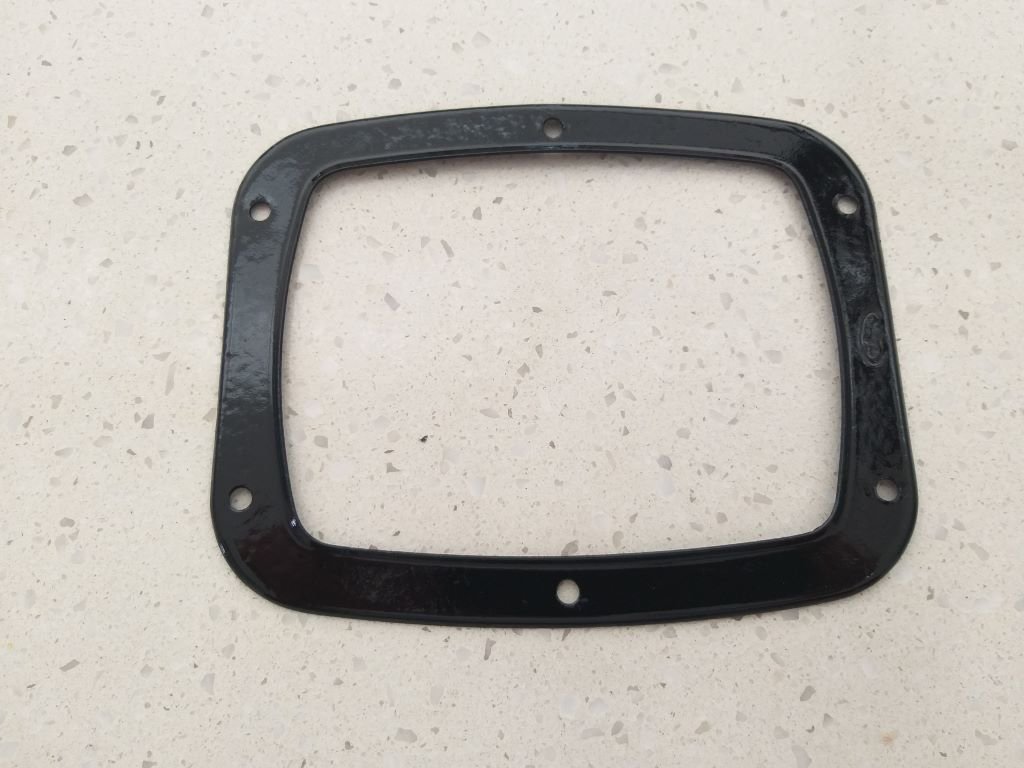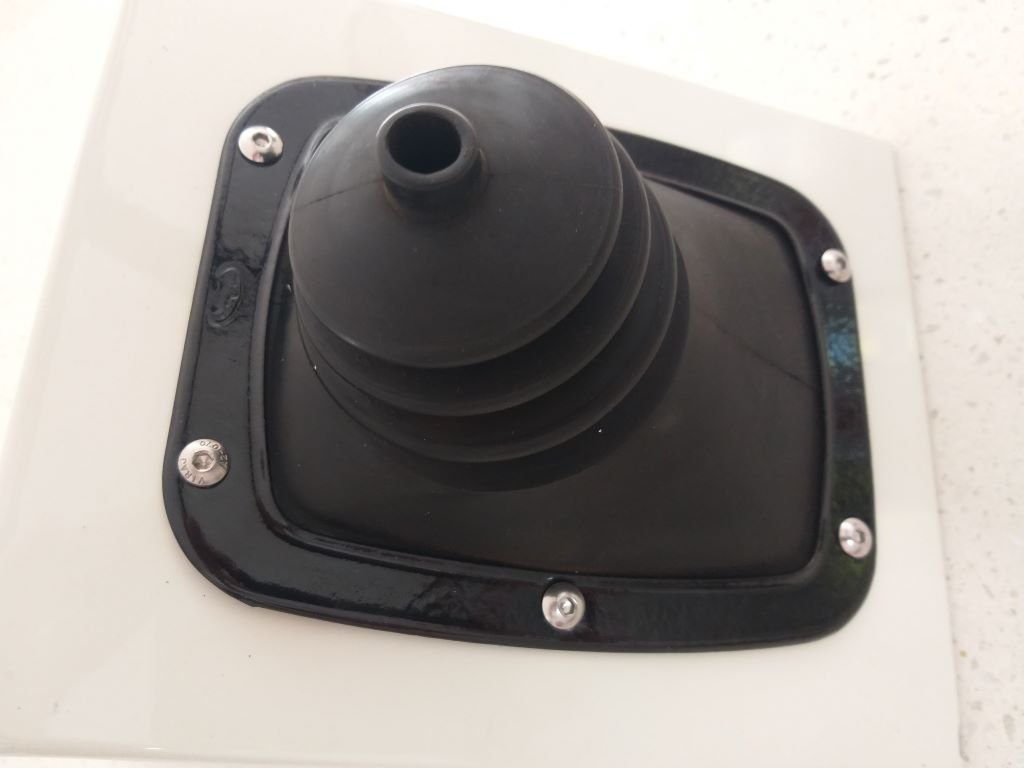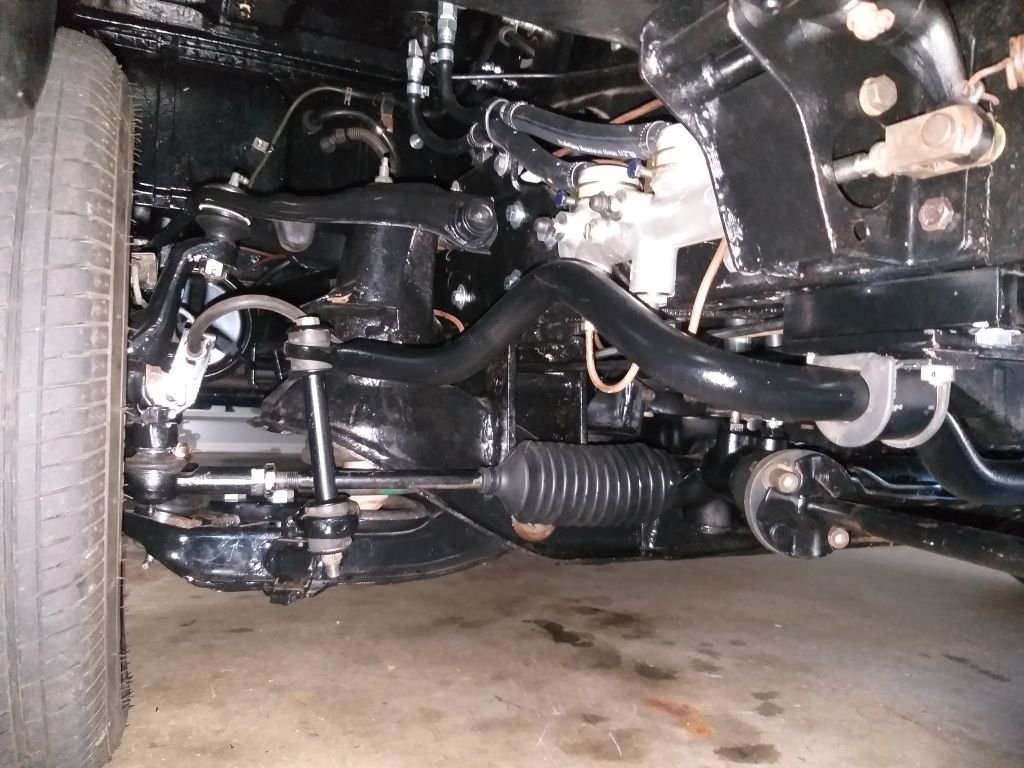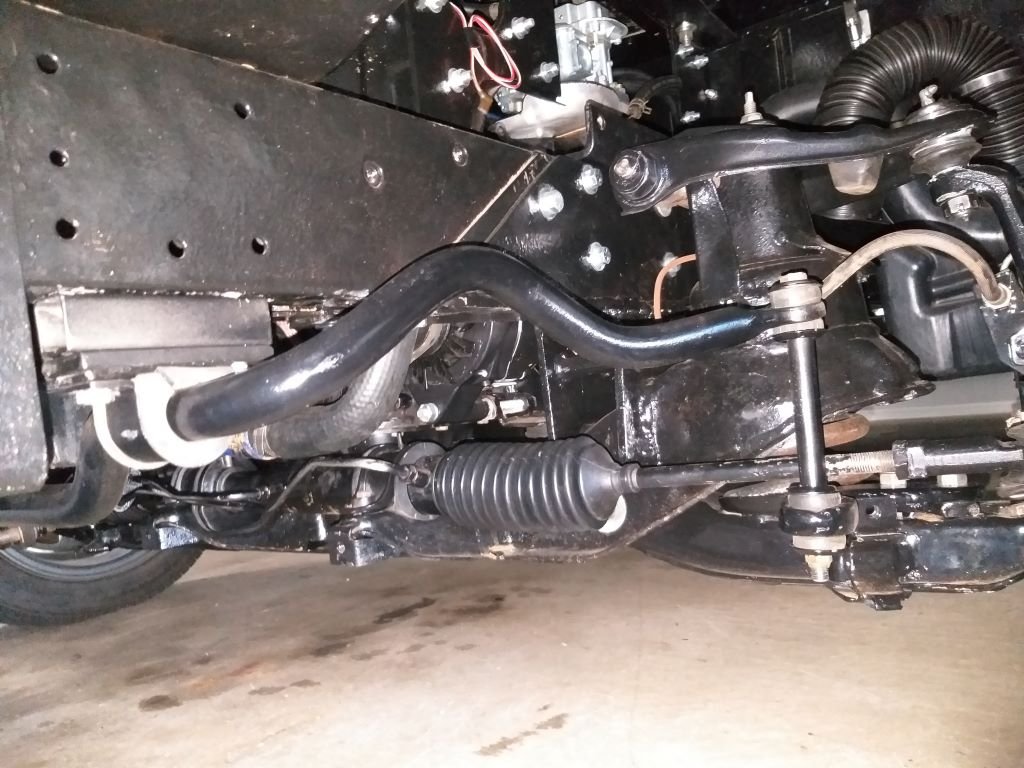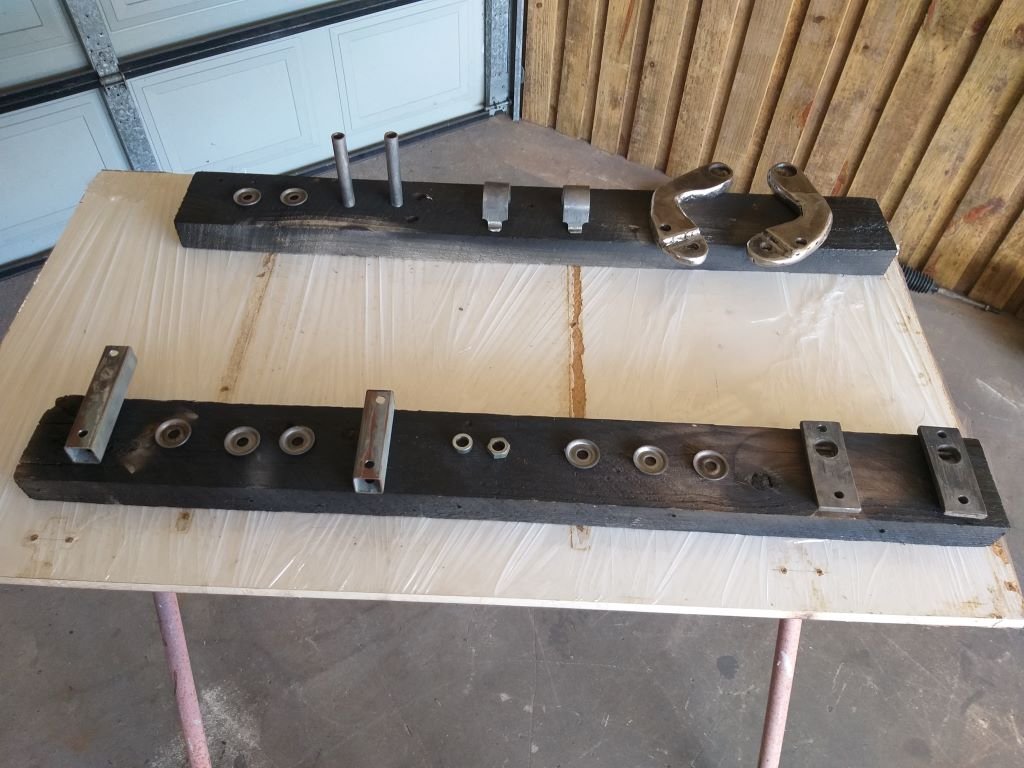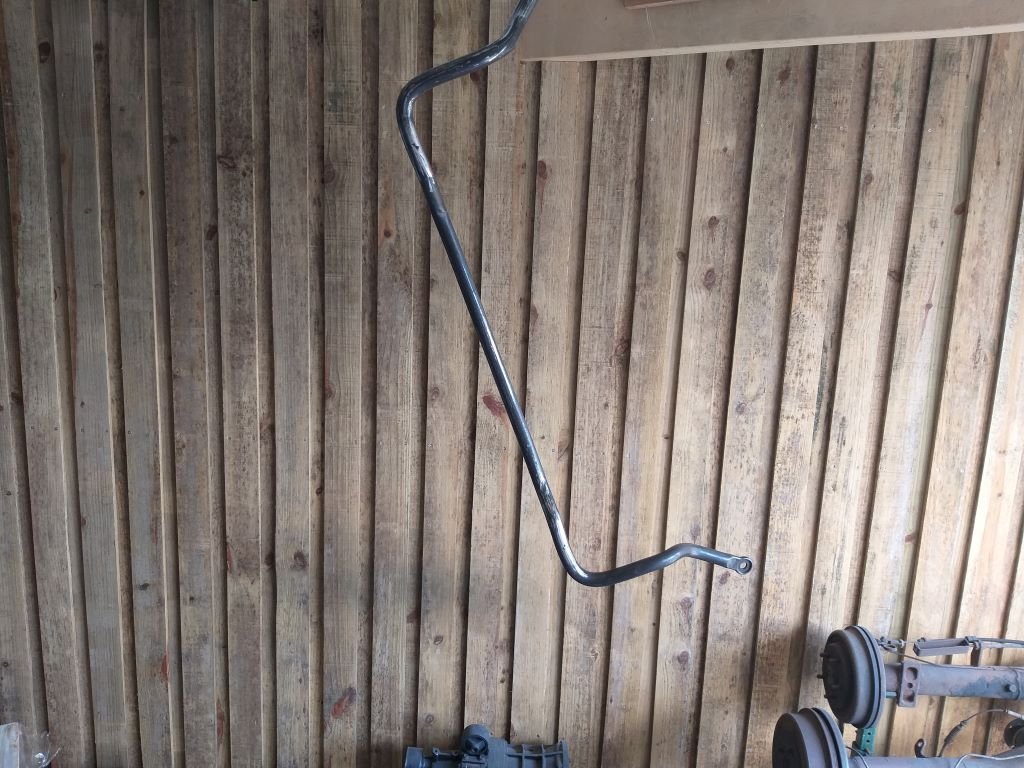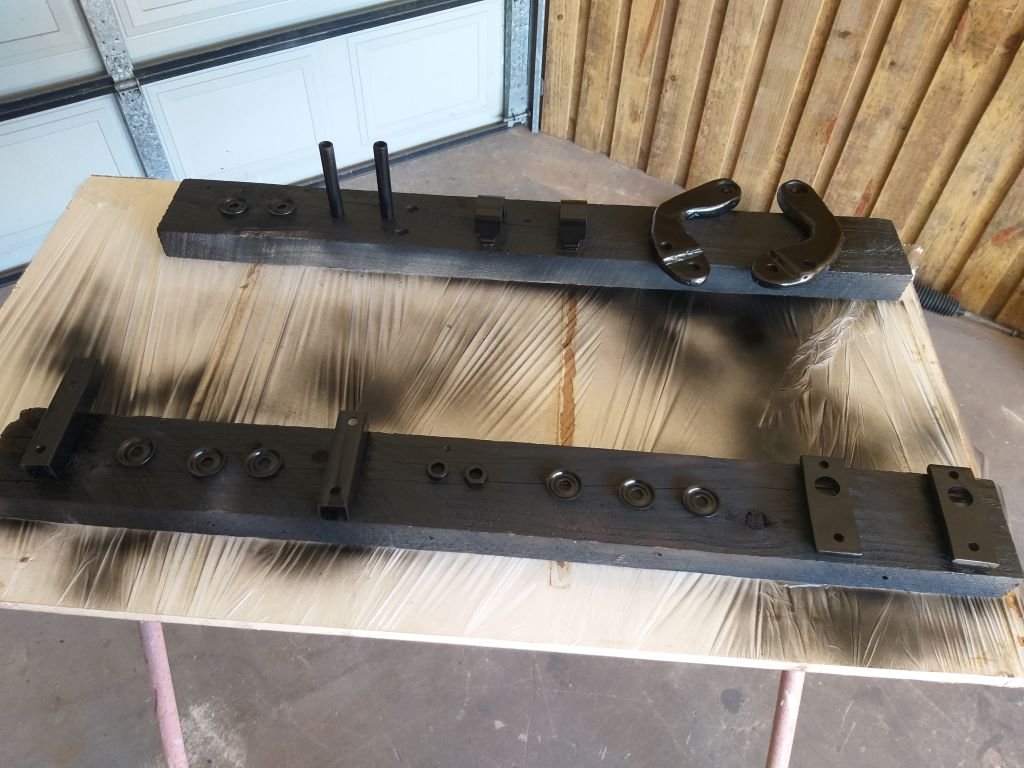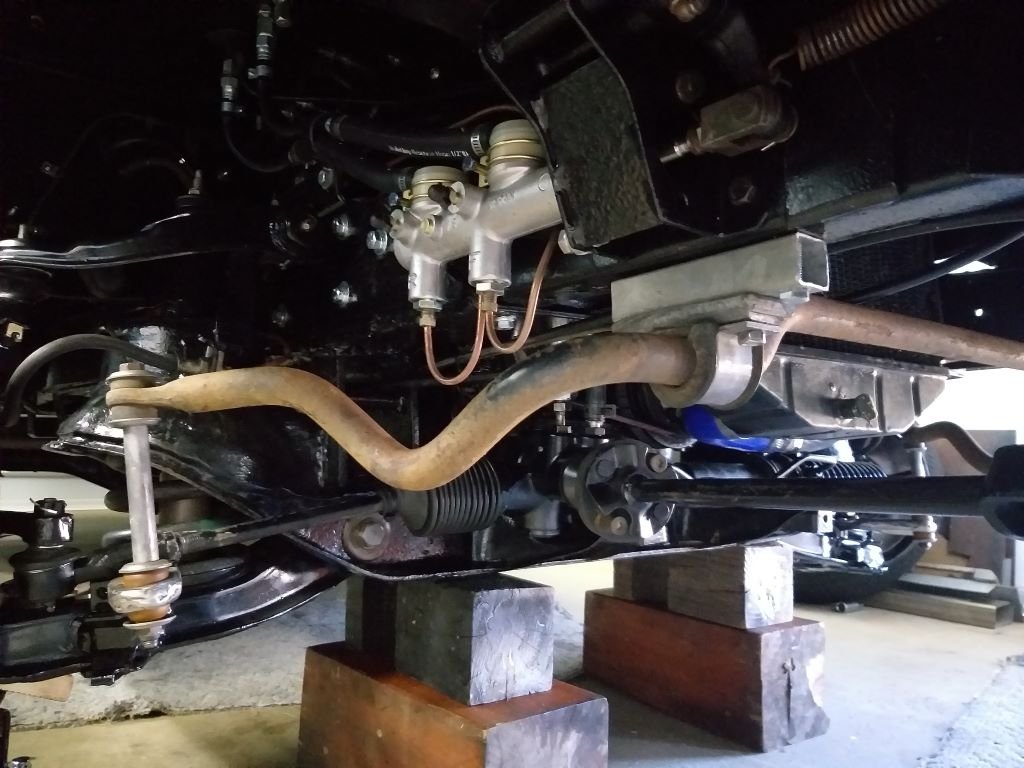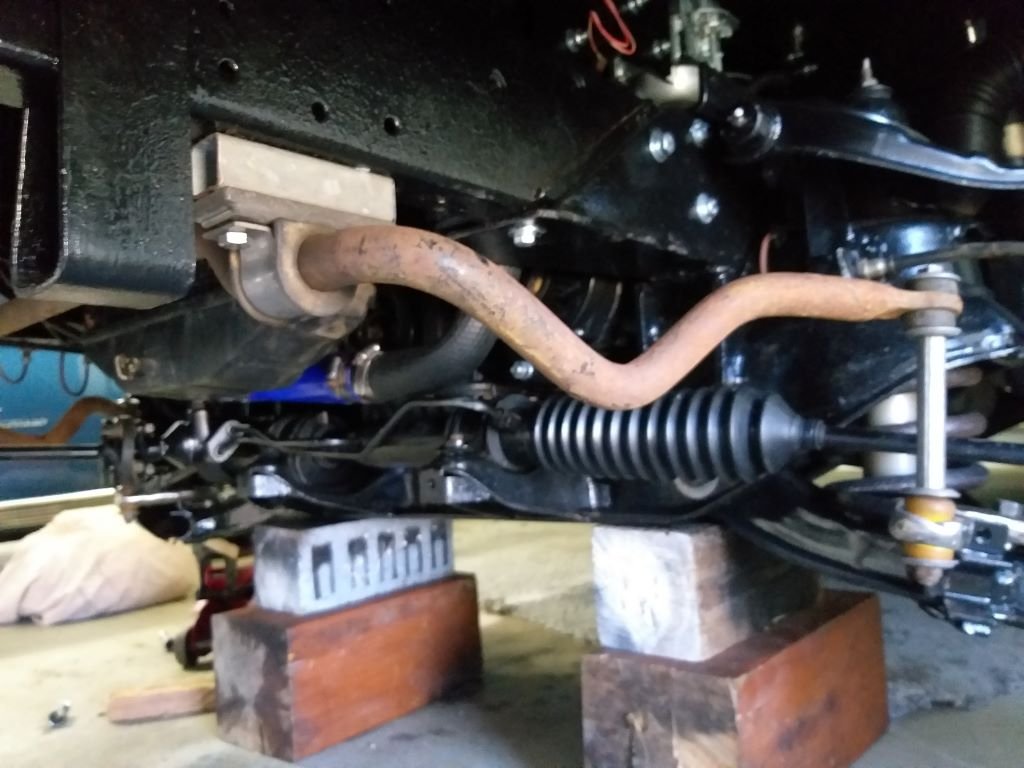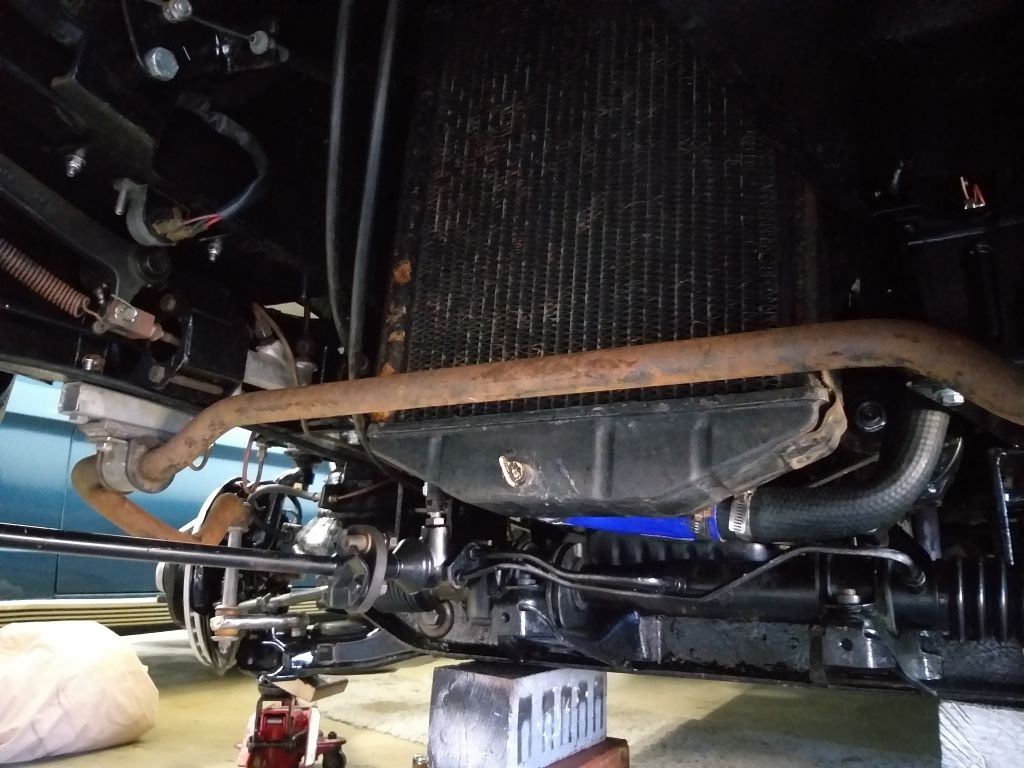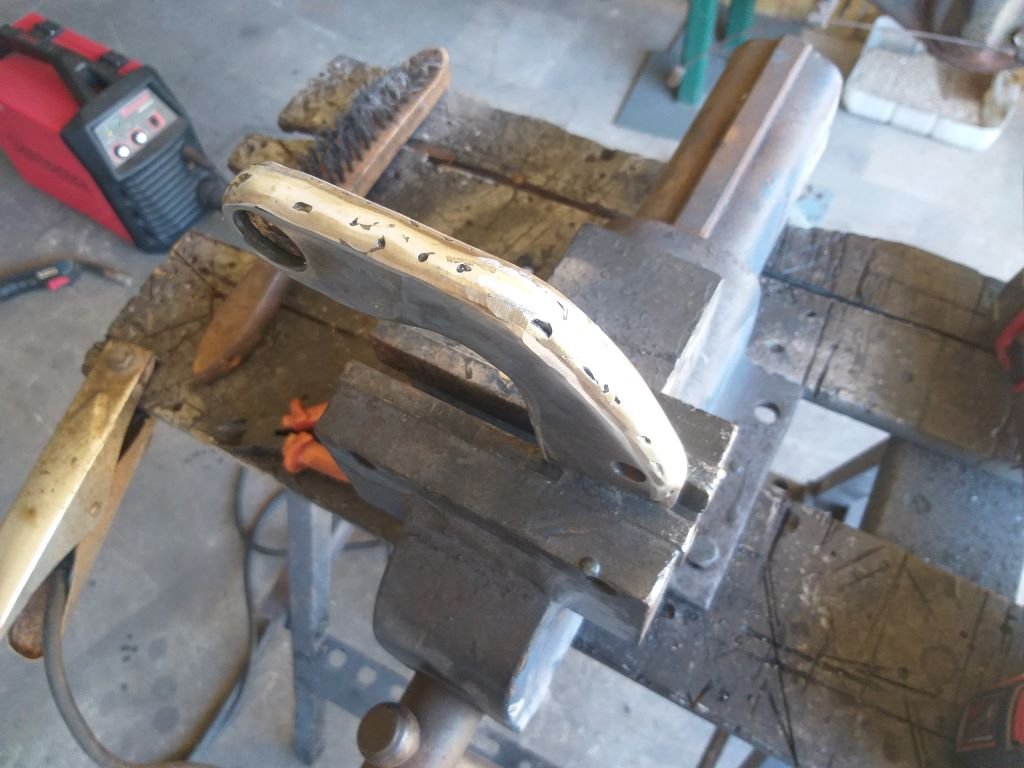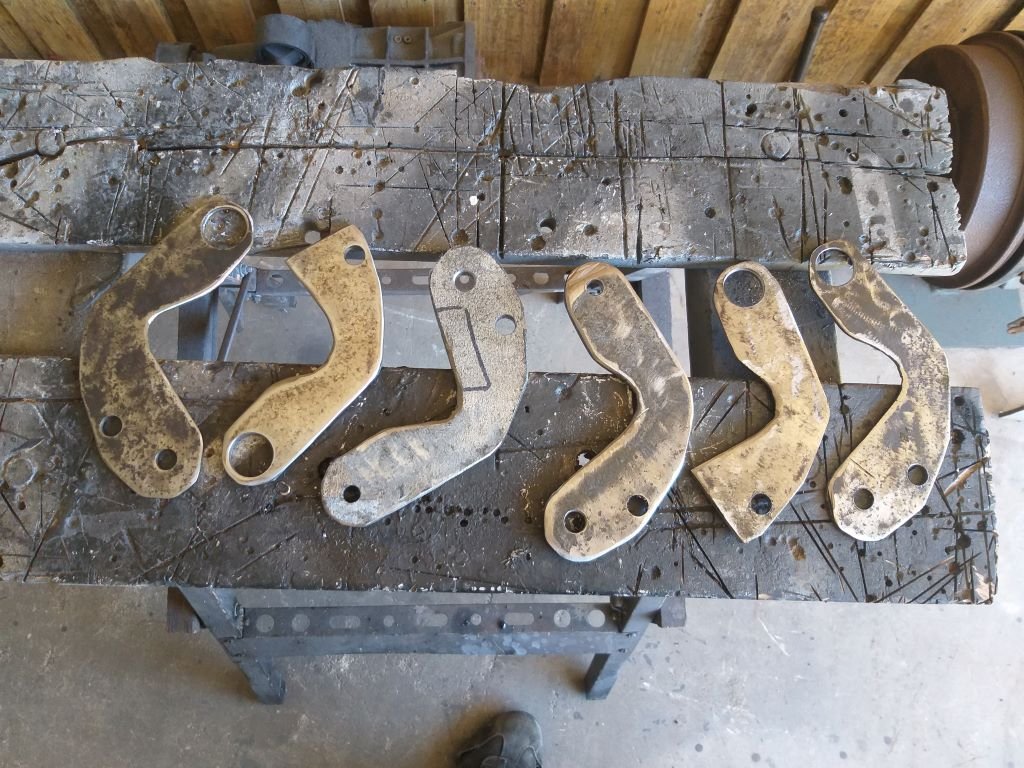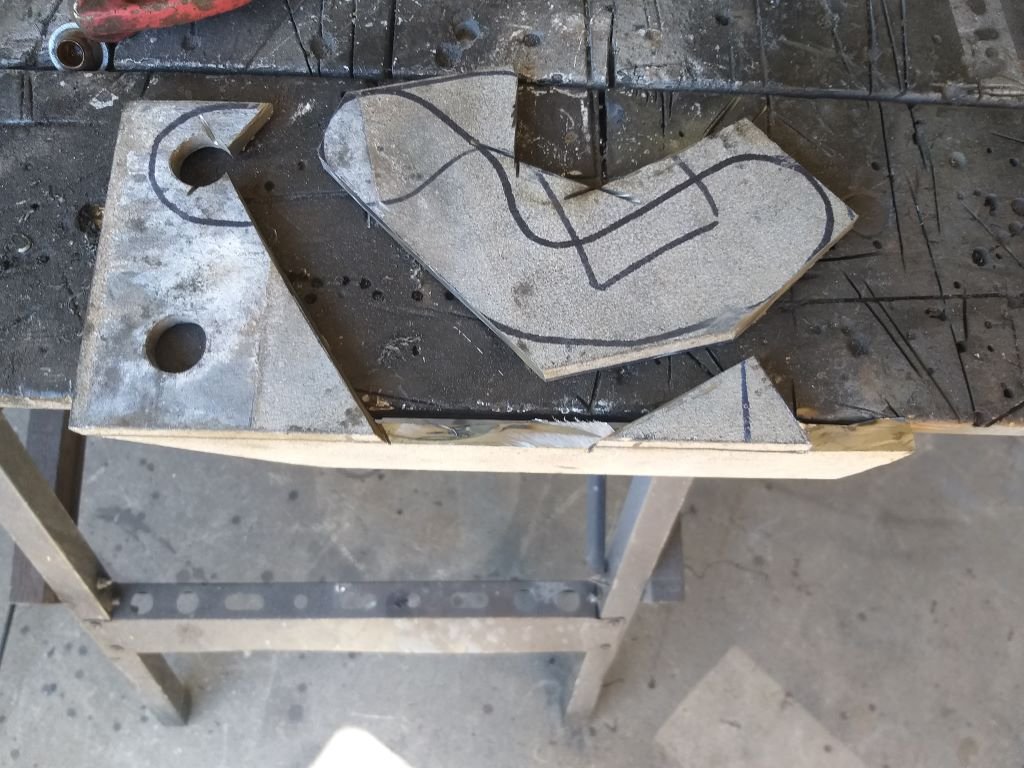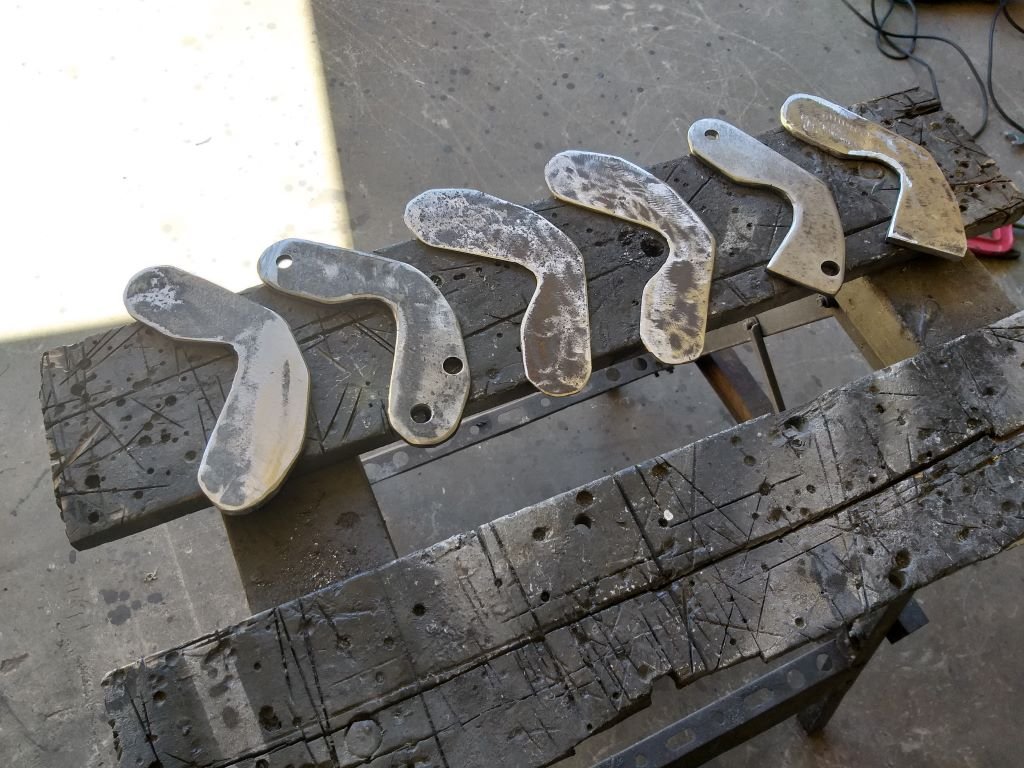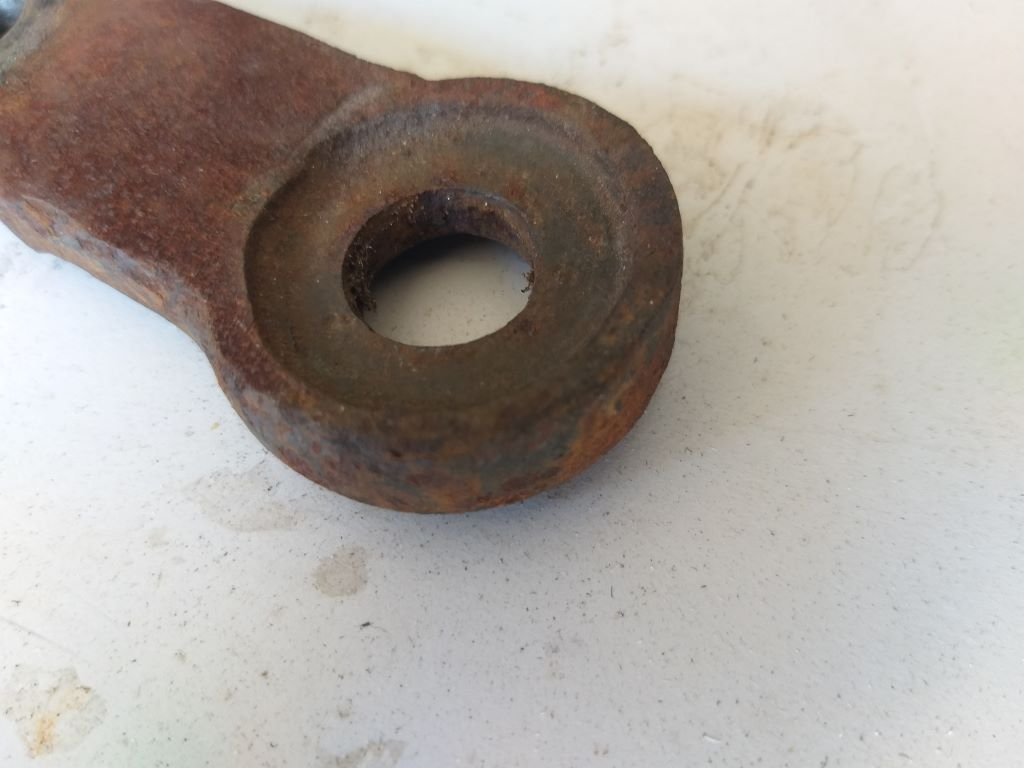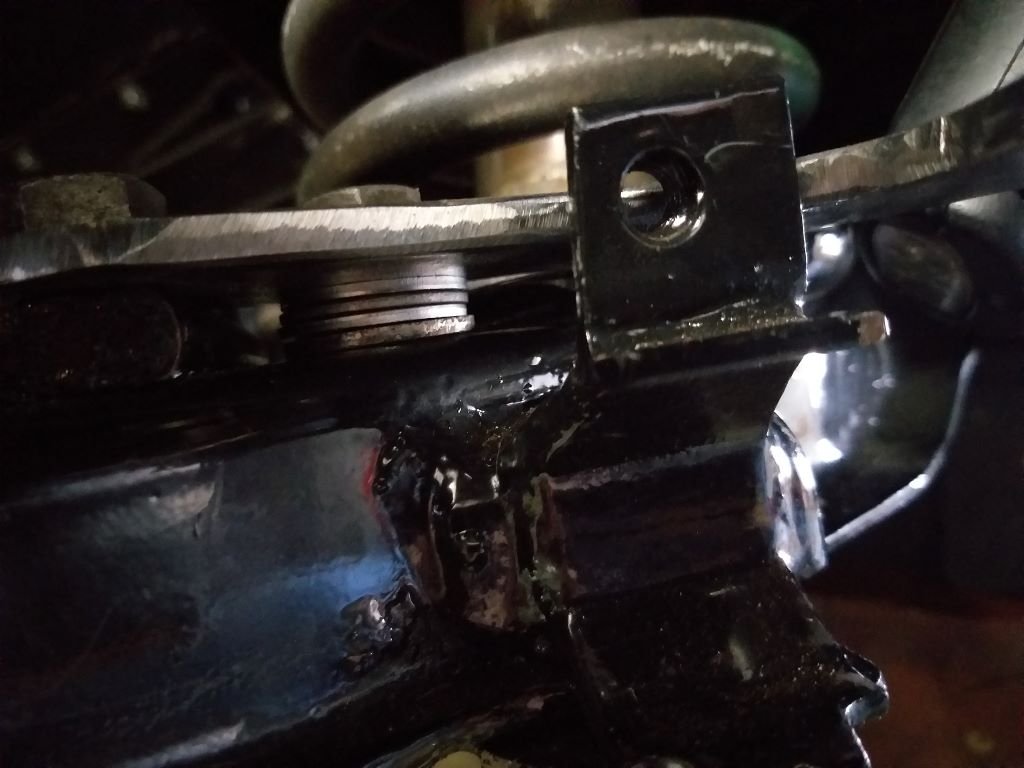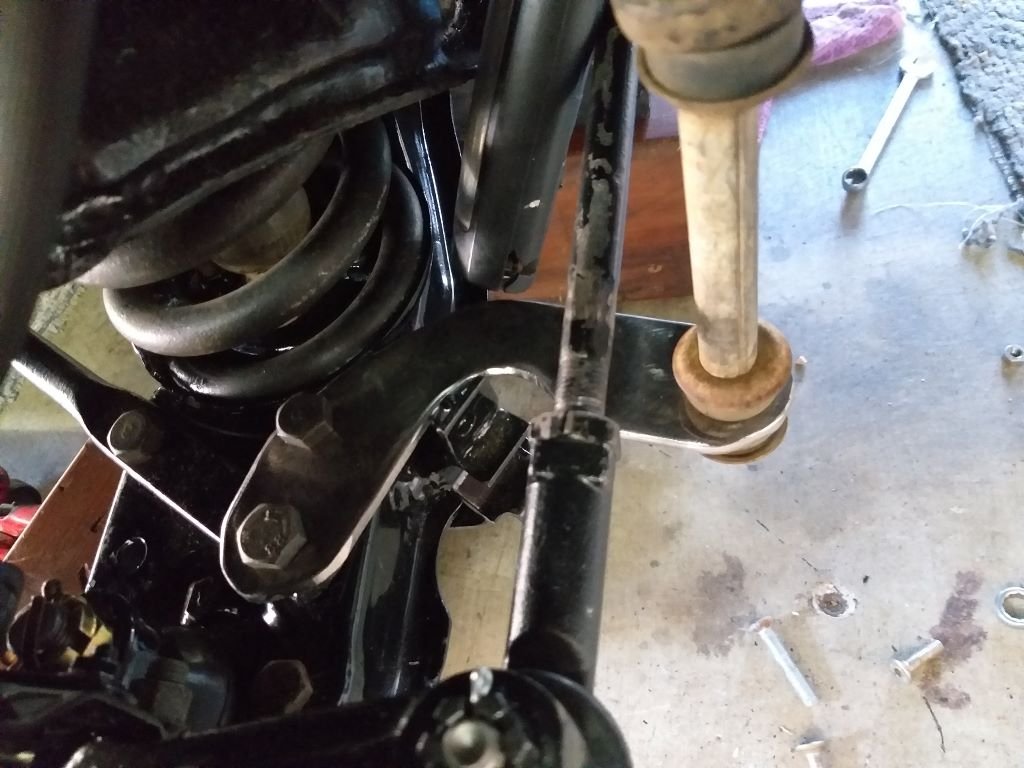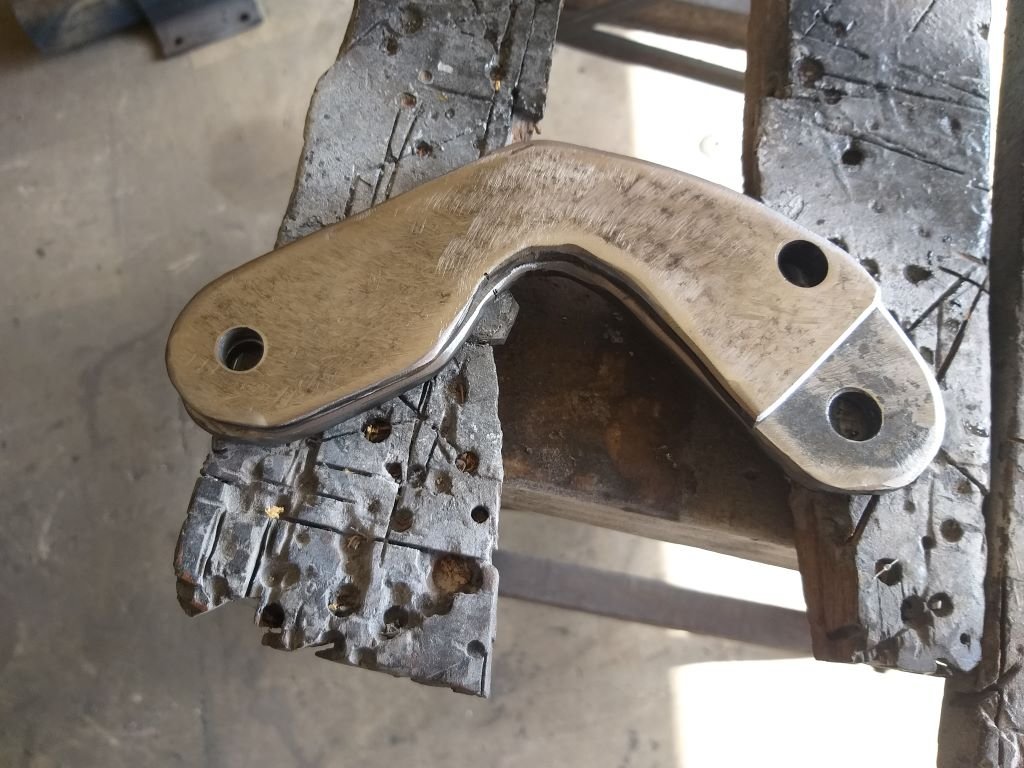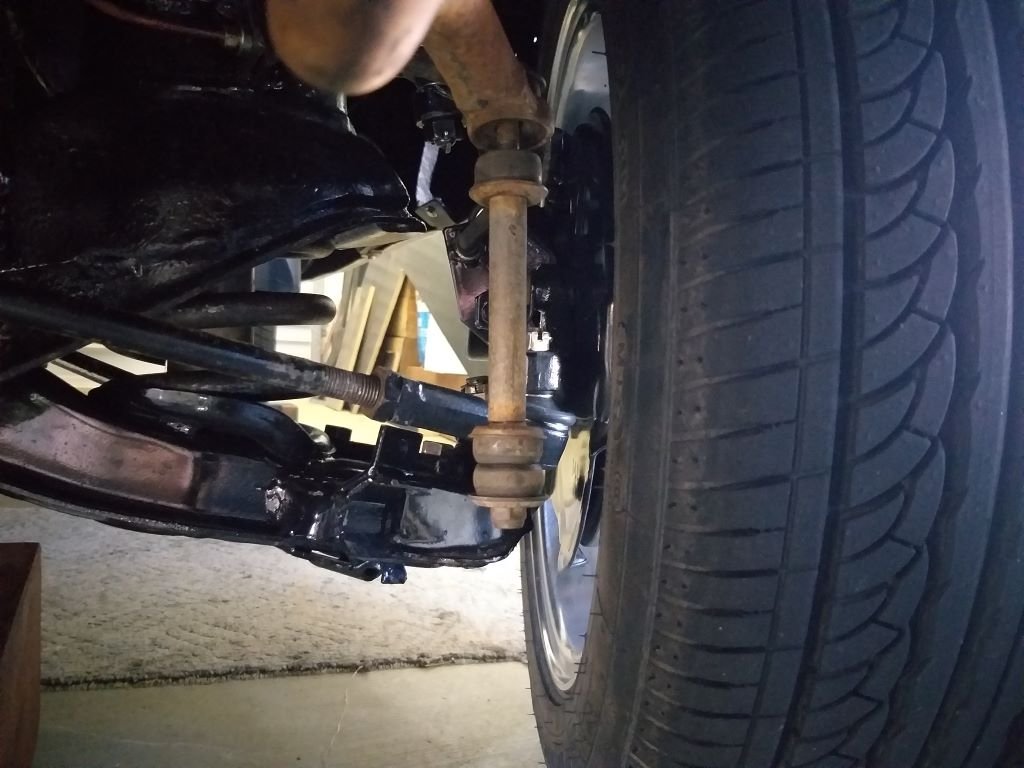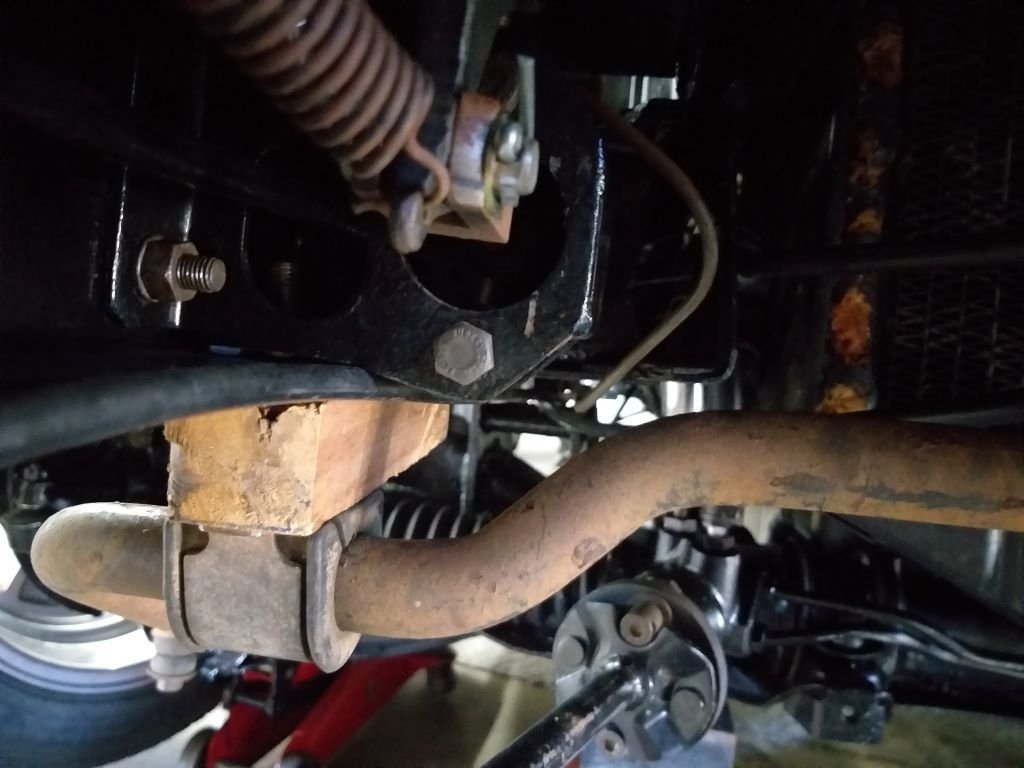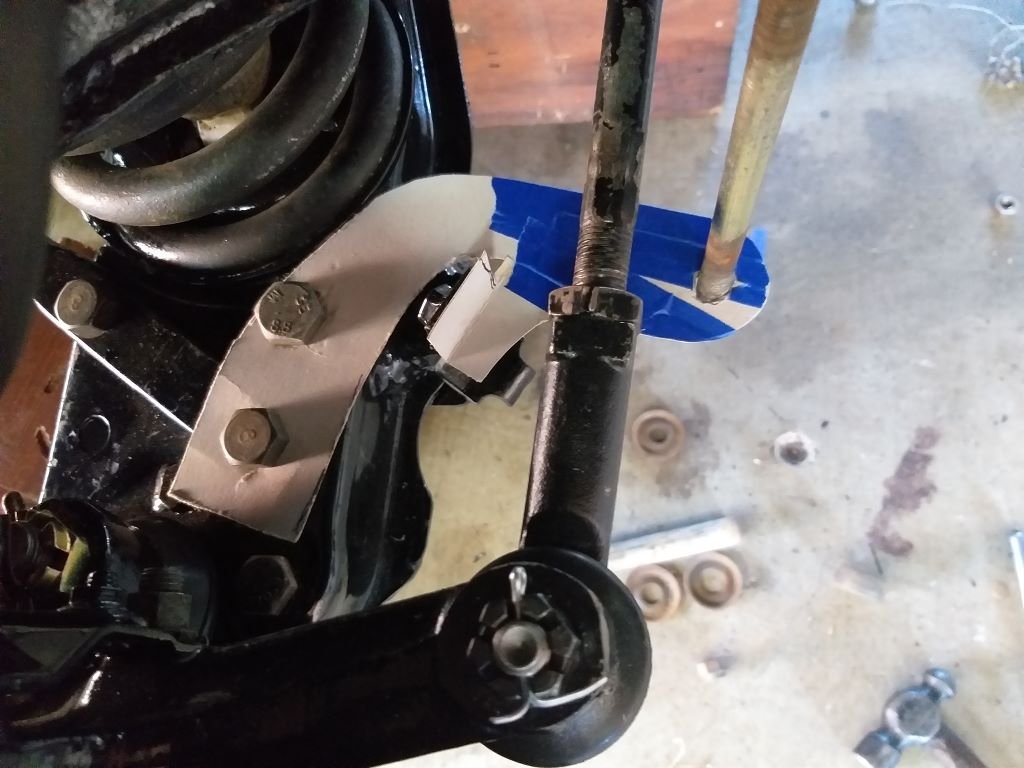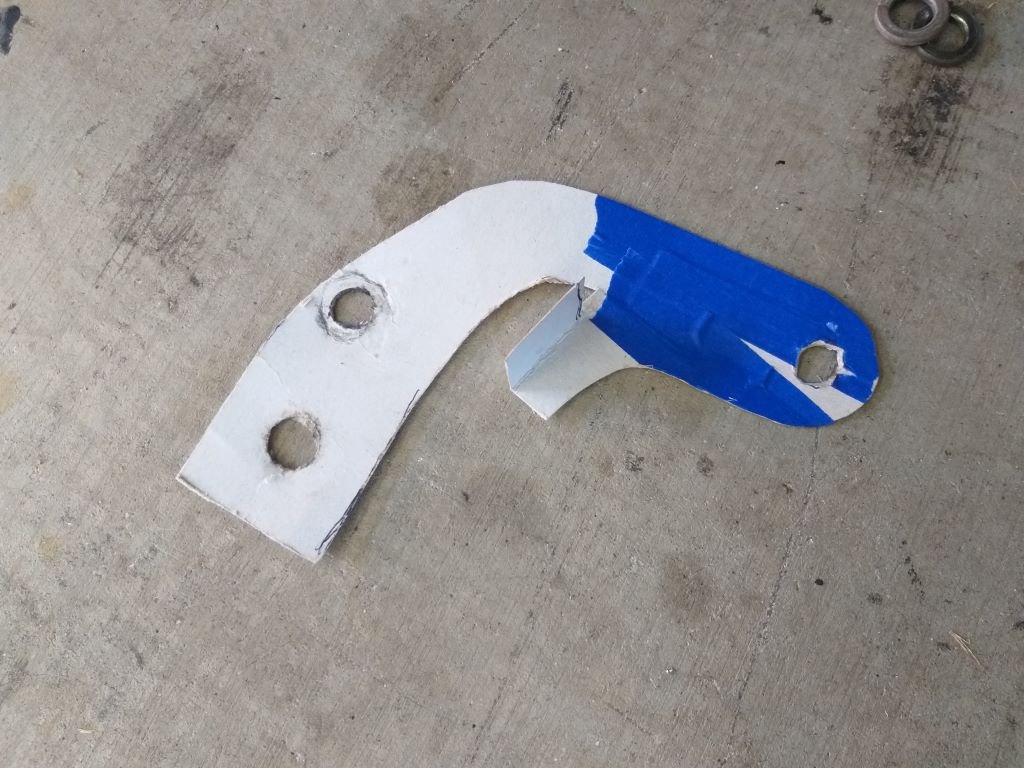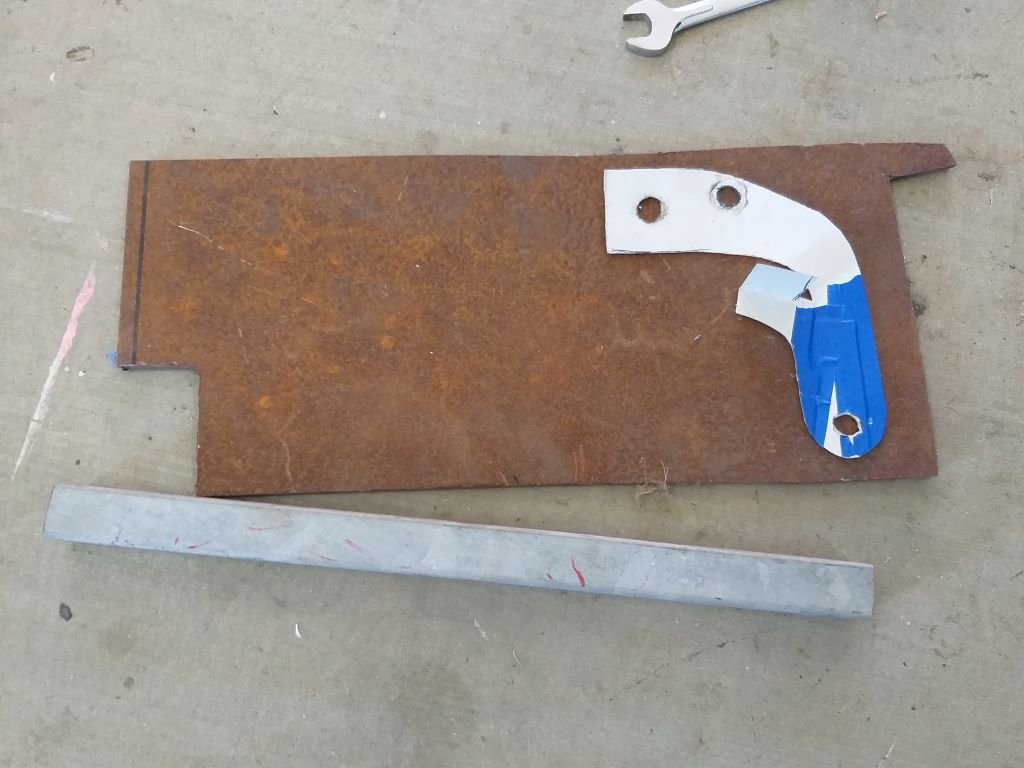-
Posts
1614 -
Joined
-
Last visited
-
Days Won
2
Everything posted by Flash
-
Thanks for posting those photos Bryan. Definitely the first time I've seen that setup. My mate Grant has a few MK2 GTs in his collection, but the gauge cluster looks quite different to the GTE. I always fancied this look. My first car was an Anglia 105e and back in the day you could buy a fibreglass dash for the 105E that mimicked this setup, but I was just a peniless school boy so I ended up making a gauge pod out of plywood that I covered in vinyl and then slapped it onto the Anglia dash with a few self-tappers. I thought it was the dog's bollocks.
-
I'm back in a holding pattern while I wait for the hydraulic man to slot me in for my new power steering hose, so I thought I'd make a start on the next item on the list namely the fitting of extra gauges. My current thinking is to fit four extra 2 inch gauges if I can. These being a water temp gauge, a voltmeter, an oil pressure gauge and lastly a rev counter. Looking at what other Thames owners have done, there are a few options. This image shows an instrument cluster that has been attached to the factory option heater box: Whilst I currently don't have a heater box one of my future plans is to fabricate a similar looking box to house my a/c evaporator, so fitting a gauge pod like this could be an option, but in my case I now have the floor mounted gearshift which would clash with this. So, for this reason I've excluded this as an option. The next option is quite a popular one and involves replacing the open glove box with a flat panel that allows for the fitting of extra gauges, switches and the like. Just like so: I'm currently leaning towards this setup. The only thing that I don't like about it is that it looks homemade. I'd prefer something that looks like it could have been a factory option. I then remembered that the old Cortina MK1 GTs had a nice setup, that looked like so: It just so happens that my mate Grant has a couple of Cortinas and he had a spare GT cluster that he lent me. However, on closer inspection the GT gauge pod has an angle built into it which wouldn't suit a flat panel. There is no way that I was going to hack up a rare GT cluster just to make it fit, so I came up with a plan B which involves using 4 cheap plastic gauge pods that I will poke through a flat mounting panel to create a similar look to the GT cluster. eBay delivered up 4 of these beauties earlier in the week, so it's time for me to make a start.
-
Started off the day by chucking a bit of weld to strengthen up the folds. Hit it with a flapper disk to mask my ugliness. Then a quick spritz of satin black. Looks half decent.
-
Today's focus was on the fixings for my newly fabricated air deflector. Bolting up the front of the deflector was easy as my plan was to use the factory mounting points on the valance where the original deflector was fixed. The rear fixings for the factory deflector were on the original Thames cross member, which is no longer, so I had to get creative. Luckily two of the chassis based mounting holes for the original cross member looked to be positioned perfectly for the task. All I had to do was fabricate two little mounting tabs. Started off with some CAD work: Which I replicated in steel. And the test fit went off without a hitch. Tomorrow I'll run a bead of weld along each fold just to beef things up where I scribed the plate. Then a quick clean up followed by a spritz of paint and that will be another item ticked off the list. Thanks for looking.
- 715 replies
-
- 14
-

-
Created a second air deflector mock-up using an old piece of plywood which made it rigid enough to create accurate side profiles in cardboard. The funky shaped cutout on the driver's side upright is needed to clear the floor mounted high beam switch. A test fit proved successful, so I rummaged around in my sheet metal bin, but sadly I didn't have a piece of flat plate big enough, so yesterday we did a trip into town and I picked up this 1.5mm thick beauty: Had to figure out a cunning way to fold up the main shape. After a bit of head scratching, I decided to use one of the steel posts that hold up the roof for our back carport. Gave the plate a bit of a score and then clamped it to the post with an old bit of angle iron attached for leverage. My two big pipe wrenches and a handy piece of thick-walled steel pipe for extra leverage and my bender was ready to go. And then there was this: Gave the sides a bit of a trim and then carved the little notch to clear the high beam switch and she is almost ready for a test fit. Tomorrow I'll poke a few holes for mounting up front and then I need to create some mounting brackets to attach the rear of the duct to the chassis. Thanks for looking.
- 715 replies
-
- 13
-

-
A few weeks back I was swapping a few yarns with Sandy who until recently headed up the UK based Thames 400E Owner's Club. Somehow, we got onto the subject of engine cooling and in passing Sandy mentioned a U shaped lower air deflector plate that was fitted from factory to all of the 400Es with the flat upper deflector plate only being fitted to vans exported to hotter climates. He immediately had my attention as my van has only ever sported the upper deflector plate. Sandy shared this image with me: Back in the day the UK boys used to run a standard Thames radiator to cool their mid mounted V8 conversions with many of them running no helper fan at all and never experienced cooling issues. Granted the UK is a lot cooler than Straya, but I've noticed that my van runs a little warmer than I was expecting and I'm thinking that its likely due to the missing air deflector. So while I'm in a bit of a holding pattern while the paint on my Astra pump brackets dries, I figured I'd make a start on my air deflector. Started off with some rough looking CAD work: CAD is a bit floppy, so the plan for tomorrow is to create a copy in plywood as a rigid mock-up. Thanks for looking.
-
Gave my rough looking Astra pump base bracket a bit of shaping followed by a light spanking with a flapper disc and lastly a little spritz of satin black. Will let it dry overnight and I can then slap it all back together tomorrow.
-
Poked some more holes that allowed me to bolt the original Astra mounting bracket to my newly fabricated bracket. Took a few goes before I managed to get everything in place with just a smidge of clearance all around. Closed the engine lid and the top of the reservoir just clears. Sheesh, she's a tight one as the bishop said to the actress. Tomorrow I'll pull the brackets out for a bit of beautification.
-
Took a trip into town yesterday to pick up a fresh roll of welding wire and grabbed a bit of 5mm plate from my local scrappy. It's a bit crusty but nothing I can't sort out. Did a bit of cutting, did a bit of welding, poked a few holes and we have the rough makings of a mounting base for the Astra power steering pump. More tomorrow.
- 715 replies
-
- 11
-

-
Finally fitted the new carby hat and bolted the removable engine box side back into position. Looks almost like a bought one.
- 715 replies
-
- 10
-

-

VK304's 1988 Nissan Vanette w/ added SR20DET
Flash replied to Willdat?'s topic in Project Discussion
Front looks bloody awesome. I vote white. Reckon it will look killer next to the black bumper. -
Well, that's the carby hat ready to rock and roll. It took a bit of time to grind down all of my crappy welds. I cheated a bit and used some JB Weld to smooth out some of the really grotty looking bits. Also used a ripple coat which has masked some of the ugliness. Final step was to add two stainless steel washers and matching nipple caps for that extra bit of bling.
- 715 replies
-
- 14
-

-

-
Only had a few hours in the shed today so spritzed the final coats on the carby hat. I should be able to present it to you in glorious technicolour tomorrow. In other news I've been fine tuning the Astra pump bracket. It had a little angled section that was quite close to the engine and didn't seem to be serving any purpose. So, I pulled a bit of a van Gogh move and the little ear is no more. Have replaced it with a straight piece since taking this photo: I then tackled a bit of CAD and I now have this pattern for the bracket that will bolt up to the rear wall of the engine box: I've run out of welding wire and I don't have a big enough piece of steel plate to create my bracket, so it's off to town I go tomorrow for some extra supplies.
-
While the carby hat beautification project is steadily taking place in the background I thought I'd share the next item on the "to do" list with you. So, as I've mentioned before due to limited real estate in my engine box I'm only able to bless the mighty 3Y engine with one belt driven ancillary and at the moment that is the Mitsi Express belt driven power steering pump. However, the intention is to flick on our modern Bongo van and substitute the Thames as our everyday driver, and before this can happen, I need to fit a/c to the Thames. Now as I've mentioned before my initial plan was to run a 12-volt a/c compressor, but in talking to my local a/c guru I soon realised that whilst these little 21cc compressors work fine in compact hot rods they ain't going to cut the mustard in a relatively spacious Thames van. This leaves me with only one option being a beefy belt driven compressor, so the belt driven power steering pump needs to go. My first thought was to convert back to manual steering which I posted about a few weeks back and to be honest it absolutely sucked. I then turned to the OS tech forum for some guidance and those in the know suggested I look for a Holden Astra electric power steering pump as these would be relatively plentiful here in Straya. So, armed with a downloaded photo of an Astra TS which is the model required I headed over to my local wreckers. Turns out they had only one TS in stock and so I moseyed on over for a quick gander. The car looked absolutely mint. No accident damage and all that was missing was the front grill and exhaust manifold. Winner, I thought and proceeded to remove the pump which is a bitch of a job as those who have done this before will confirm. Anyway, the last step in the process was to cut the hydraulic lines and this is where things got interesting. Cutting into the pressure line resulted in not a drop of fluid leaking out. Hullo, I thought. Got it out into the sunlight and the reservoir was dry as a bone. Checked under the car and sure enough the steering rack and associated kit was still all intact. So how come this thing has no fluid I wondered. Anyway at $150 asking price and no guarantee as its classed as an electrical component I decided to walk away. Back at base camp I searched the web for another but prices for second hand units in the bigger towns over here run in the $200 plus figures. Eventually I decided to take the plunge on a new aftermarket unit which costs about double the going rate for a second hand one but comes with a 3-year replacement warranty. And then a few days later a friendly courier dropped this off: First thing I noticed was this funky looking electrical plug which I couldn't identify. I toyed with the idea of cutting off the plug, but the seller confirmed that this was likely to void the warranty. So I reached out to OS with a photo of the plug and luckily @tortron came to the rescue with a link to one which is now making its way from the other side of the world. While I'm waiting for the plug, I started poking around the van to figure out a suitable location for the pump. I was going to tuck it under the driver's side front fender, but the issue is access to the incorporated fluid reservoir for top ups, so I then focused on the back corner of the engine box where my existing Mitsi Express fluid reservoir is mounted. Pulled it out to clear some space and yep, this looks like it will work perfectly: Next step was to trim the redundant mounting tabs off the Astra mounting bracket: I'm just waiting for the touch up paint to dry and I can then puzzle out some kind of angled bracket to attach the Astra bracket to the rear wall of my engine box. Thanks for looking.
- 715 replies
-
- 13
-

-
So, the plan with the new carby hat was to use the original chrome cover that came in the kit I bought. I was going to use 4 small sections of threaded rod screwed in to the carby flange that normally takes 4 short bolts to hold the filter base down. First step was to poke 4 holes in the lid and it all worked out okay on the test bench, but when I tried to fit it to the Thames ... instant fail. There just wasn't enough headroom to get the lip on the lid past the sides on my newly fabricated housing. Just shows you how space poor I am. I then thought about slicing off the lip on the short side in order to squeeze the top through the gap, but then realised that even if I did that there is no way that I was going to be able to get a hold down nut on the two threaded rods sitting under the floor. Bugger. After a bit of head scratching I came up with an alternate plan for the lid. First step was to carve a flat lid with a little tab out of some flat plate and I then carved up an offcut to make a little hold down bracket that I spot welded to the side of the base. Looks like so: The new lid slides between the sides of the base and the cab floor with about 7mm of gap. The two threaded rods closest to the rocker cover are well out of the way of the cab floor so I'm able to firmly bolt that end of the top down onto the rest of the housing. Not the prettiest looking thing but it is functional. Plan for tomorrow is to put a bit of lipstick on this pig, but for now here is a money shot of the thing actually in its final home:
- 715 replies
-
- 12
-

-
I've finally given up on my fibreglass carby hat. With the limited headroom that I have, I just couldn't get a low enough profile on my creation. Sad, I know, but such is life sometimes. Anyway, inspired by some photos that @yoeddynz shared of a carby hat that he fabricated for one of his customers, I thought I'd have a go at creating one out of metal. I followed Alex's recipe by slicing up the original HiAce hat. Since I'm not blessed with the carby headroom that a HiAce has I've had to create my hat in two sections that I'm able to slide in on either side of the choke tubes. Made some hoops out of flat plate which I then welded onto each half of a freshly fabricated base plate. Next step was to weld the remnants of the HiAce snorkle onto my creation. The HiAce steel is bloody thin and even with my cheapy welder on its lowest setting it was still blowing holes, so I had to resort to some dodgy spot welding. Not the prettiest thing you have ever seen, but it is strong and even if my flapper disk doesn't improve things I can live with it. At the end of the day most of it will remain hidden under the chrome top cover that I've pinched from the performance air filter. More planned for tomorrow, but in the meantime, here are a few photos for your viewing pleasure.
- 715 replies
-
- 11
-

-
Having a bit of a cruisy day today. Earlier in the week I was giving my mate Grant a hand to fit a solar setup to his camper van and to say thanks he gave me a metal surround for the Cortina MK1 gearshift boot that he gifted me a while back. It was pretty crusty, but after spending three days in a vinegar bath it has come up pretty good. You can even make out the little "Enfo" factory stamp on the face. Gave it a spritz of satin black and then bolted it up. I'm bloody chuffed as it finishes the surround off nicely. I'm lucky to have such a generous mate.
- 715 replies
-
- 12
-

-
And this is hopefully the last time that I will mention the front stabiliser bar as by now I'm sure that you are as sick of the subject as I am ..... LOL. I'm looking forward to working on something else for a change.
- 715 replies
-
- 12
-

-
Front stabiliser bar - Chapter 11 Loaded Mrs Flash and our wee dog into the Thames for a blatt around our neighbourhood and I'm happy to declare that the excess body roll is now a thing of the past. Flushed with success I proceeded to dismantle the setup, then gave everything the once over with the wire wheel of death followed by a light tickle with a flapper disc. First coat of paint has been applied and I thought I'd post this update while I'm idling between coats. Just remembered I've got to sort out some crush tubes for the hollow square body mounts, so best I crack into that.
-
Front stabiliser bar - Chapter 10 And that's the rest of the fabrication work done on the front stabiliser bar. Tomorrow morning I'll drop it back onto its wheels and take it for a spin around my test track. If all goes well, I'll strip it all out and give it a lick of paint. Some fresh rubbers wouldn't go amiss either. Soz for the quality of the photos.
- 715 replies
-
- 12
-

-
Front stabiliser bar - Chapter 9 Average looking welding in true Rough & Ready Resto style, but at least that is the first mounting bracket all glued together.
-
Front stabiliser bar - Chapter 8 Started the morning off by poking the rest of the holes in my bracket wafers. Next step is to bolt the wafers together in their correct order and then trim the edges of each wafer flush before welding them together. However, I decided to give my long-suffering neighbours the day off from my grinder. It's the very least I can do on a Sunday. More tomorrow when everyone else is back at work.
-
Front stabiliser bar - Chapter 7 Spent the morning serenading the neighbours with the dulcet tones of my angle grinder and I now have the six main components of the stabiliser bar bracketry in various states of completion. More holes to poke tomorrow and once that is done, I can then fizz them together.
- 715 replies
-
- 10
-

-
Front stabiliser bar - Chapter 6 After giving it some more thought last night there is a slight change of plan in terms of the stabiliser bar mounting brackets. The bracket is a little more complicated than just a flat bit of plate as it has a little indented cup that the isolation rubbers sit in. So, I need to somehow recreate that cup. Also, I'm using two existing bolt holes on each lower control arm to fix the plates, but one of the holes already holds down the strut rod brace. My original plan was to fabricate a spacer for the other hole to keep my new bracket level, but then I realised that I could do something nifty that will allow me to create the cup and a spacer all in one. My amended bracket will thus consist of three layers of steel plate. The centre layer will be cut out of 9mm steel. The lower plate will be 6mm plate with a bigger 26mm hole to create the lower cup and a cut at the other end to accommodate the strut rod brace. The upper plate will be 3mm thick with another 26mm hole to create the upper cup. I'll fizz all three plates together by running a weld around the outer edges. The result will be a lot stronger than my original design. So with my new plan in place, I cracked straight into a bit of metal carving. Started off by creating the first 6mm plate as a template for the hole spacing and to double check the fit with something more ample than my cereal box template. The test fit went well so I then carved my first 9mm plate out of a chunky bit of angle iron that I had lying around. Poked a few more holes and then trimmed the end off the 6mm plate to clear the strut rod brace. It's starting to take shape nicely. Next job is to drill out the end hole in the 6mm plate to 26mm to create the cup. More tomorrow.
-
Front stabiliser bar - Chapter 5 Spent the morning fine tuning the positioning of the HiAce stabiliser bar and it fought me every step of the way. This bar came off a van that was equipped with torsion bar front suspension and as a result the stabiliser drop ends don't play that nicely with the bell-shaped coil spring/shock towers that my L300 front end is blessed with. Moving the bar forward enough to clear the towers through full suspension travel then caused the drop ends to clash with the steering rack ends. Finally, I moved the bar further forward so it's now in front of the steering rack ends. Just when I thought that I was out of the woods, I then had a clash between the main bar and the mounting bracket for my clutch master cylinder. I managed to solve that issue by putting a 25mm spacer between my chassis legs and the stabiliser U clamps. With the bar temporarily mounted on some blocks of wood to represent the spacers, I then spent a bit of time making sure that everything clears not only during full steering movement but also during full suspension travel. The good news is that there is ample clearance. The first photo below shows the gap between the drop end and my front wheel at full lock. The final job for today was to create a little cardboard template for the lower control arm mounts. I've had to shape the mounting bracket in such a way that it clears the coil spring seat as well as the original stabiliser mounting brackets as I don't want to cut off the original mounts. Everything will be bolt in, so I don't have to perform any welding on my lower control arms. The plan for tomorrow is to carve up a crusty looking piece of 6mm steel plate and a section of 25mm square tube to create the final components.


